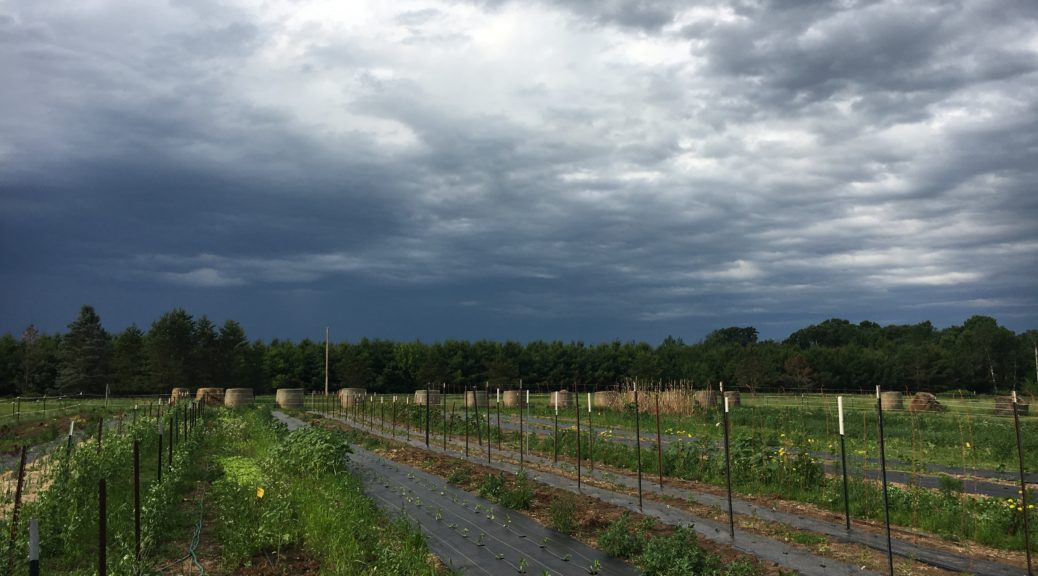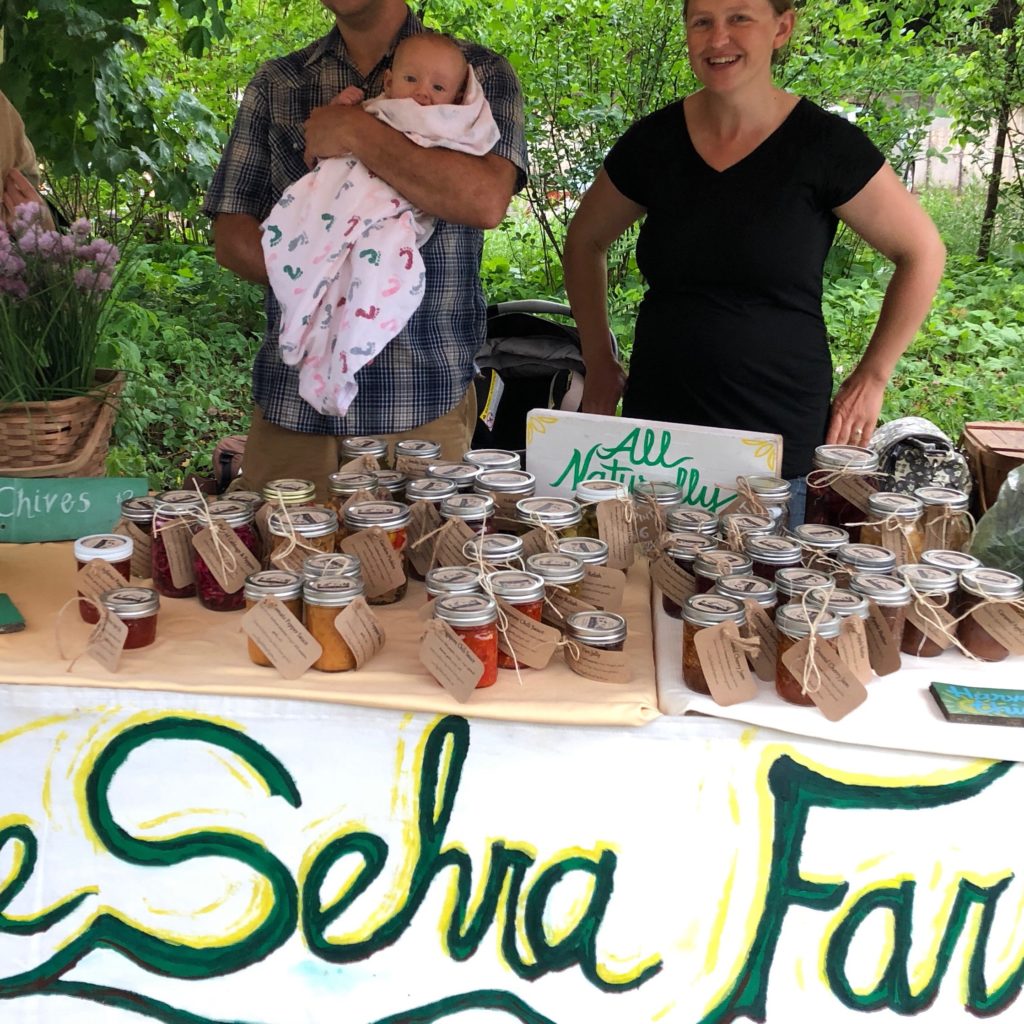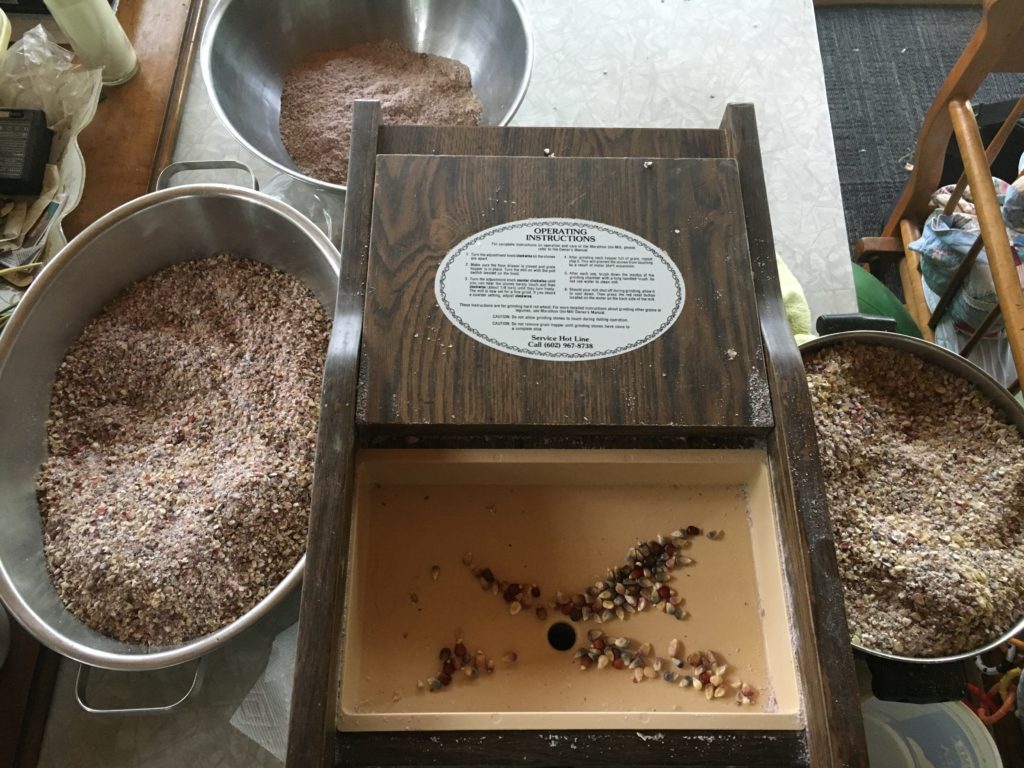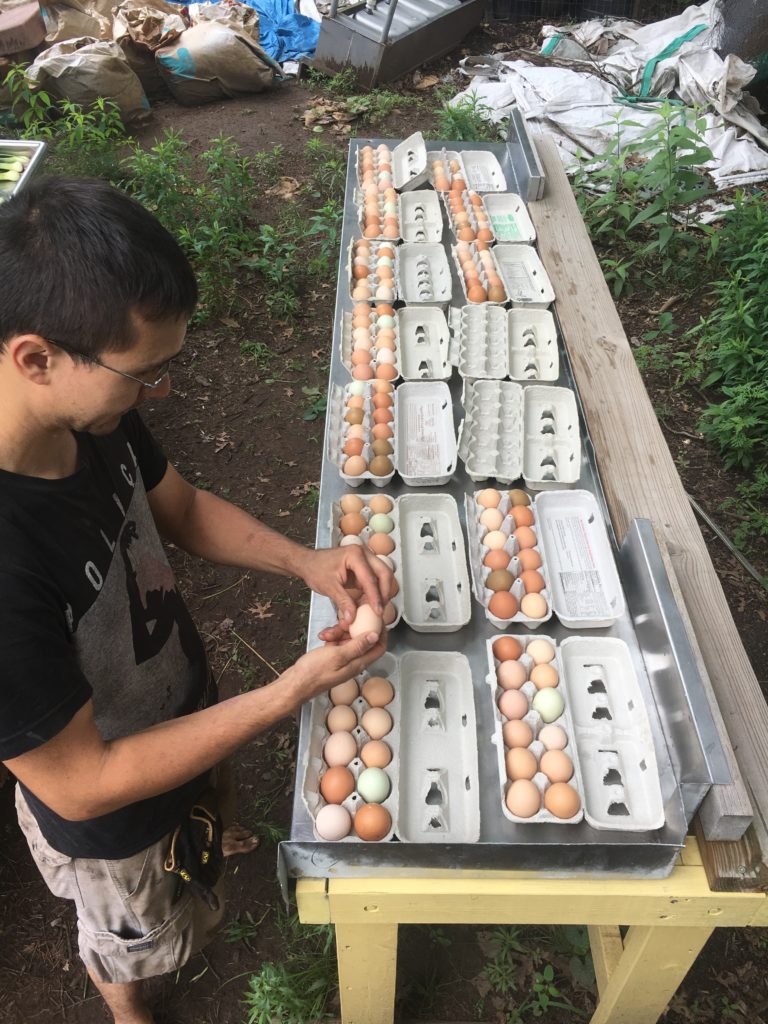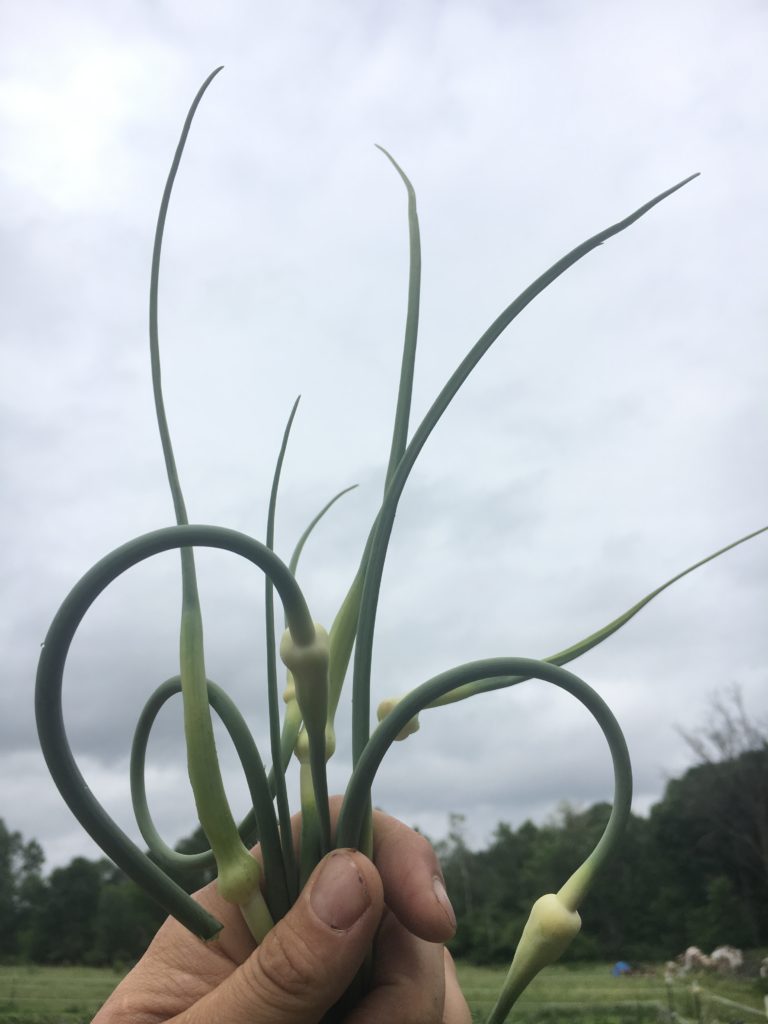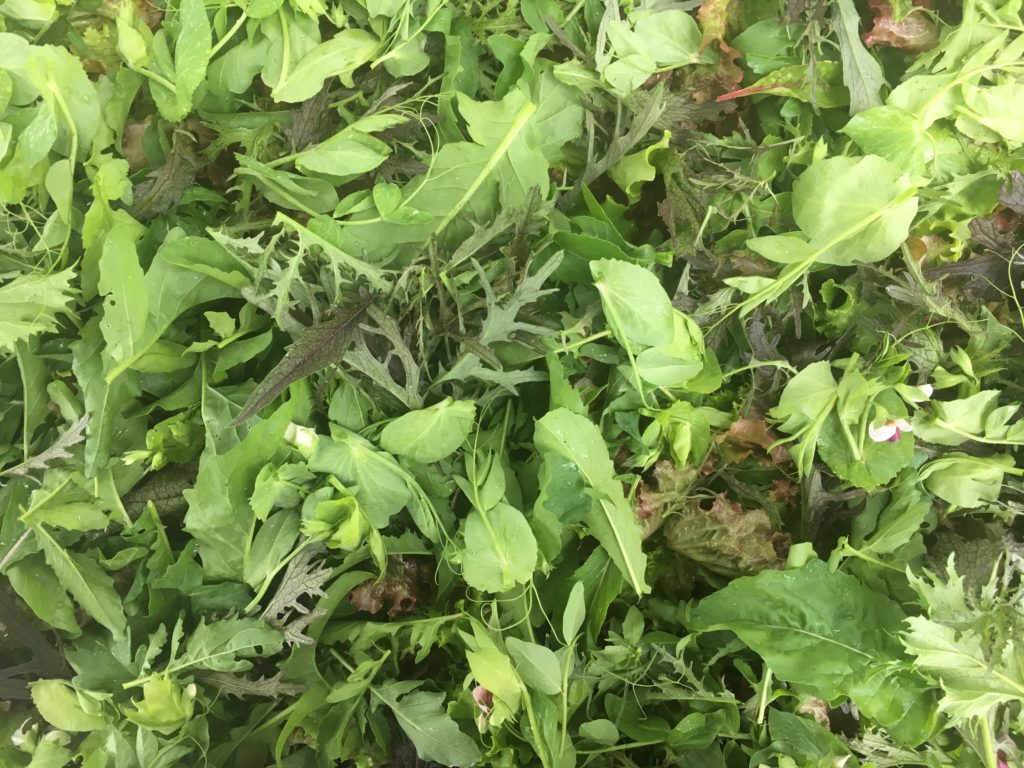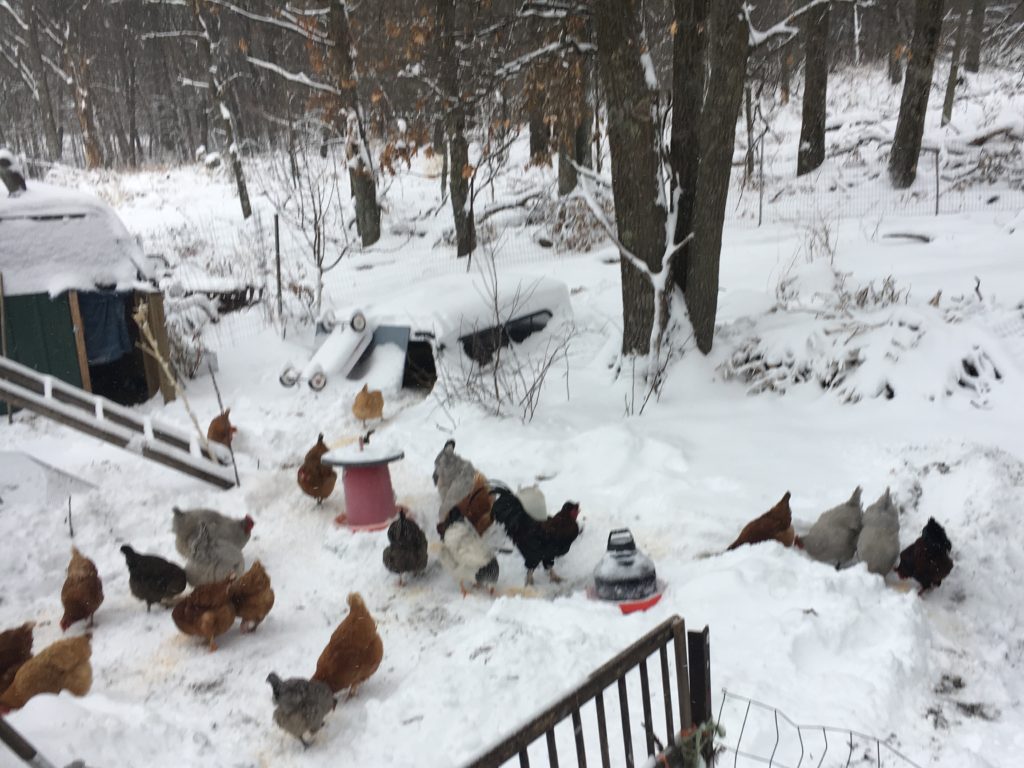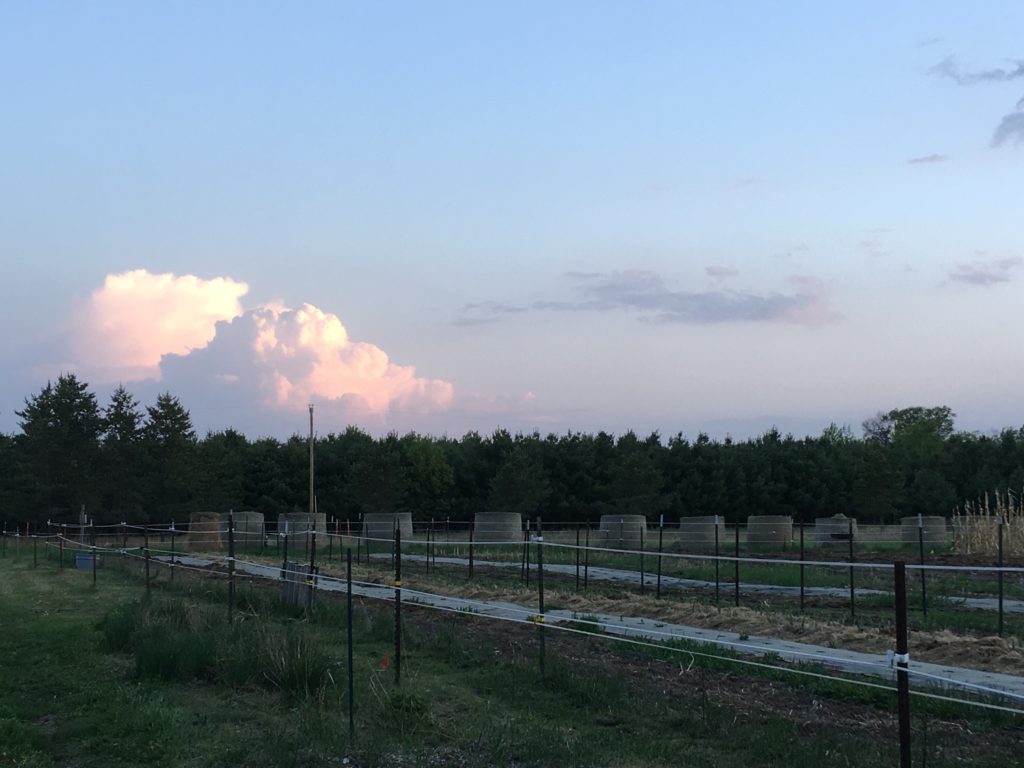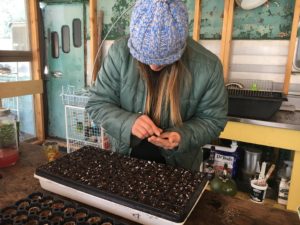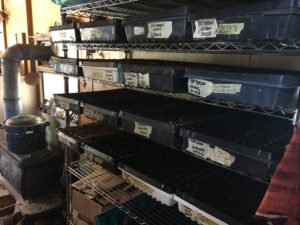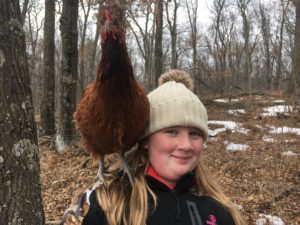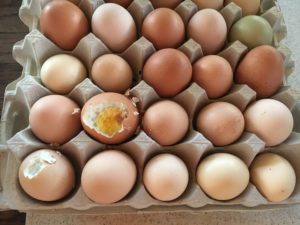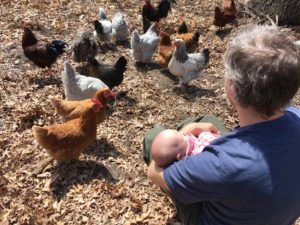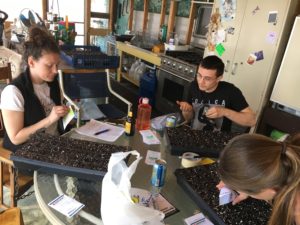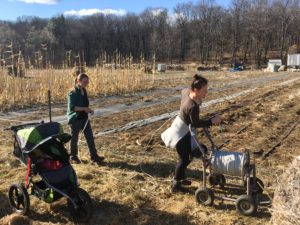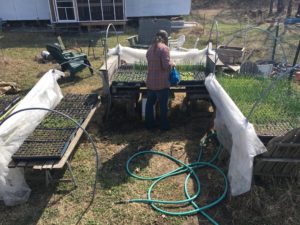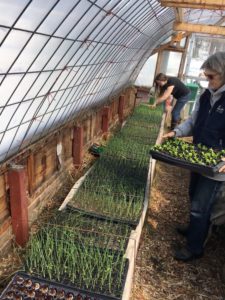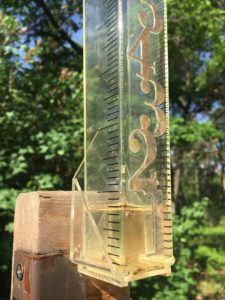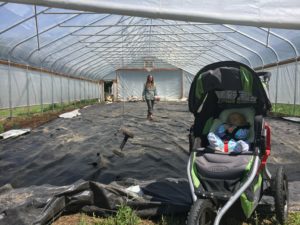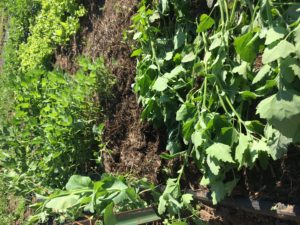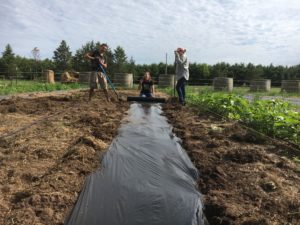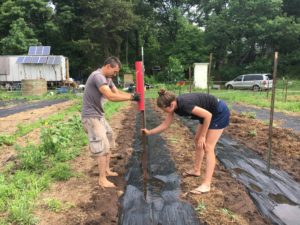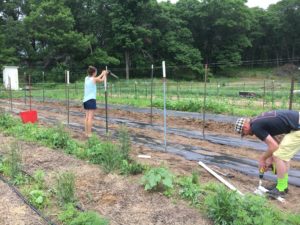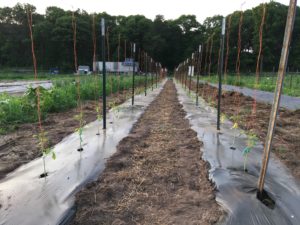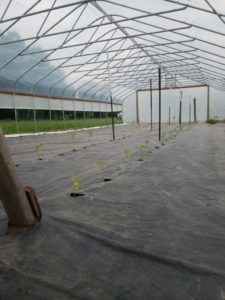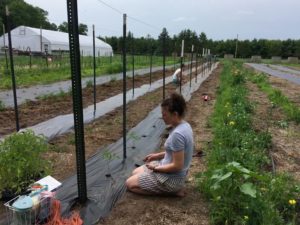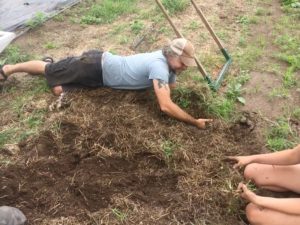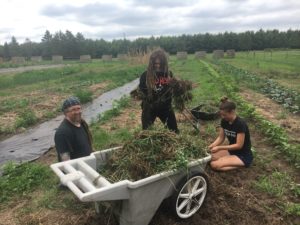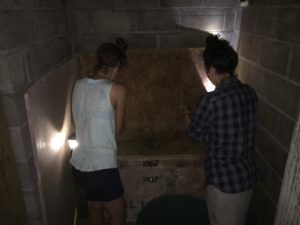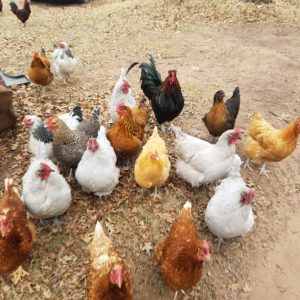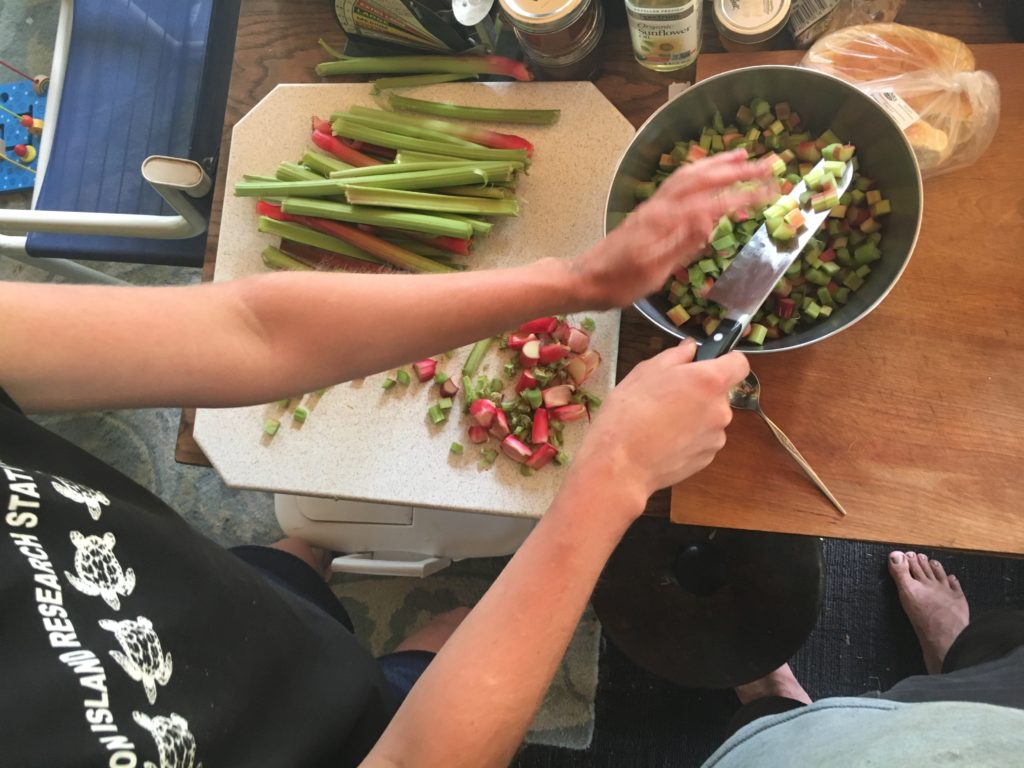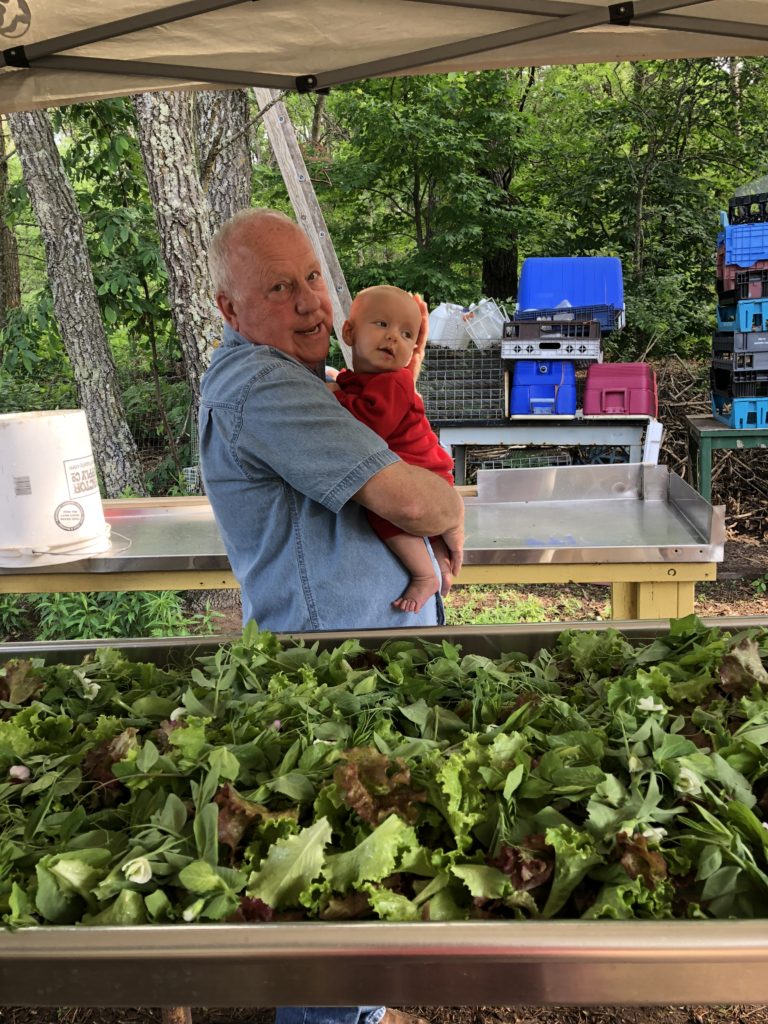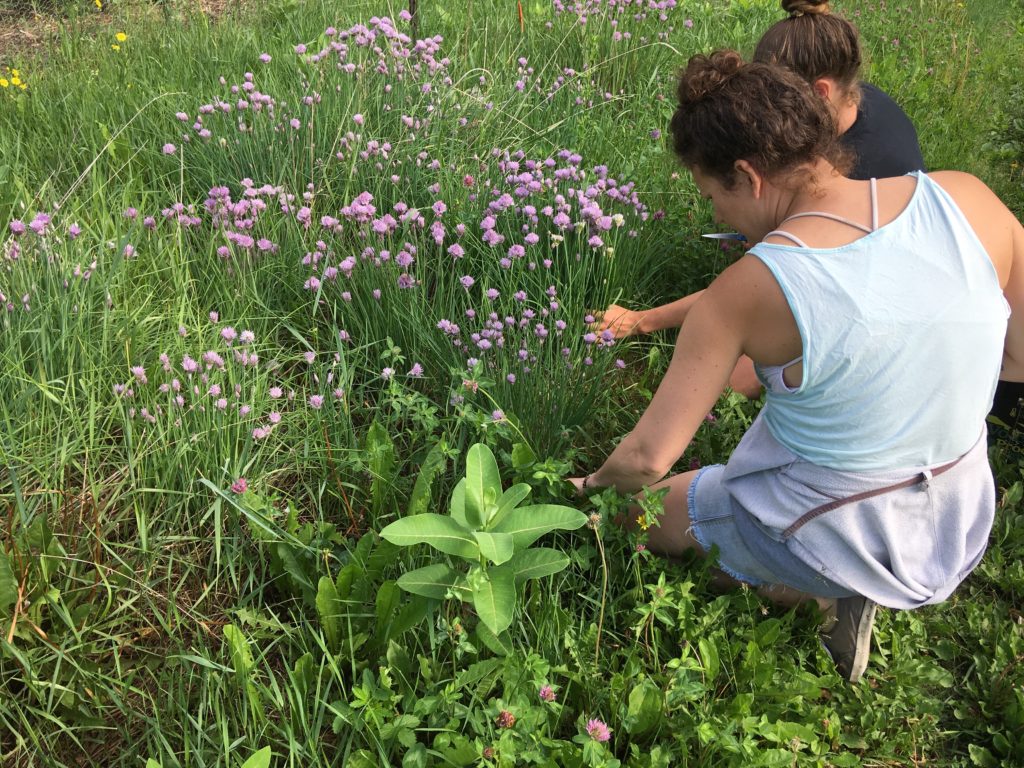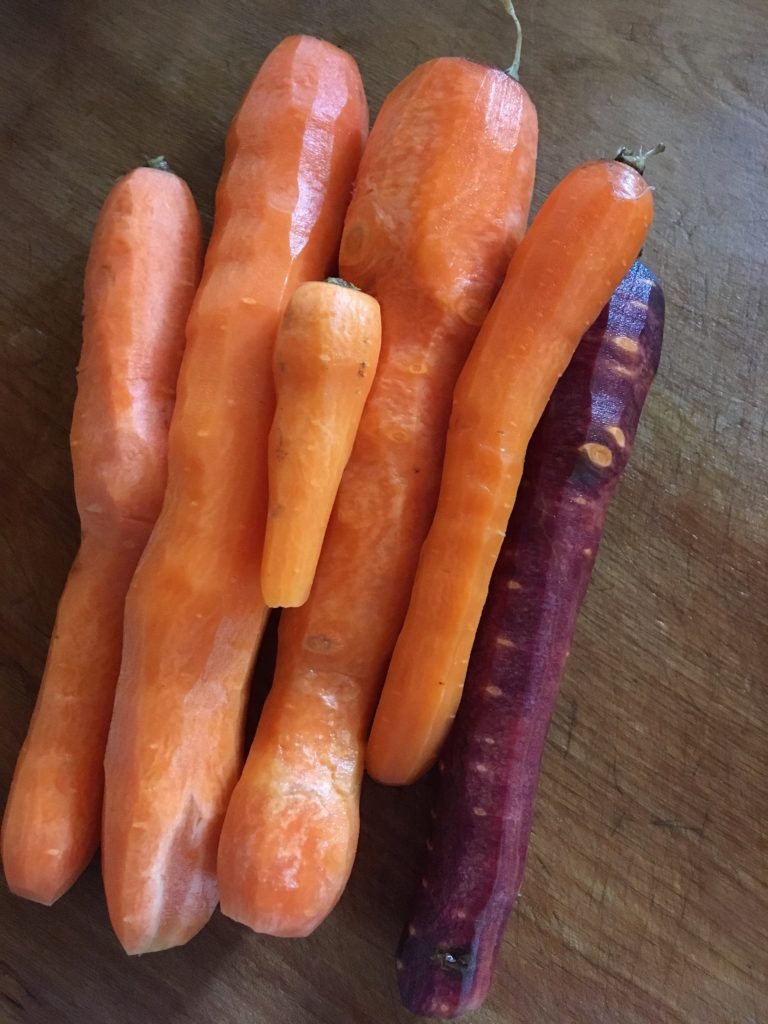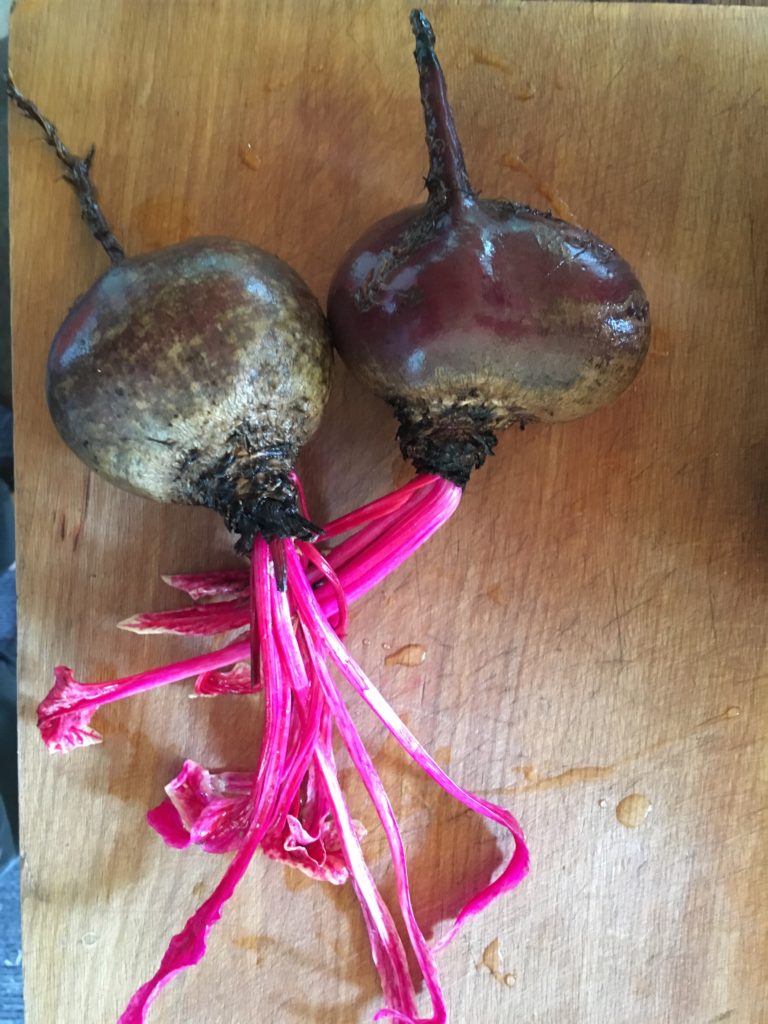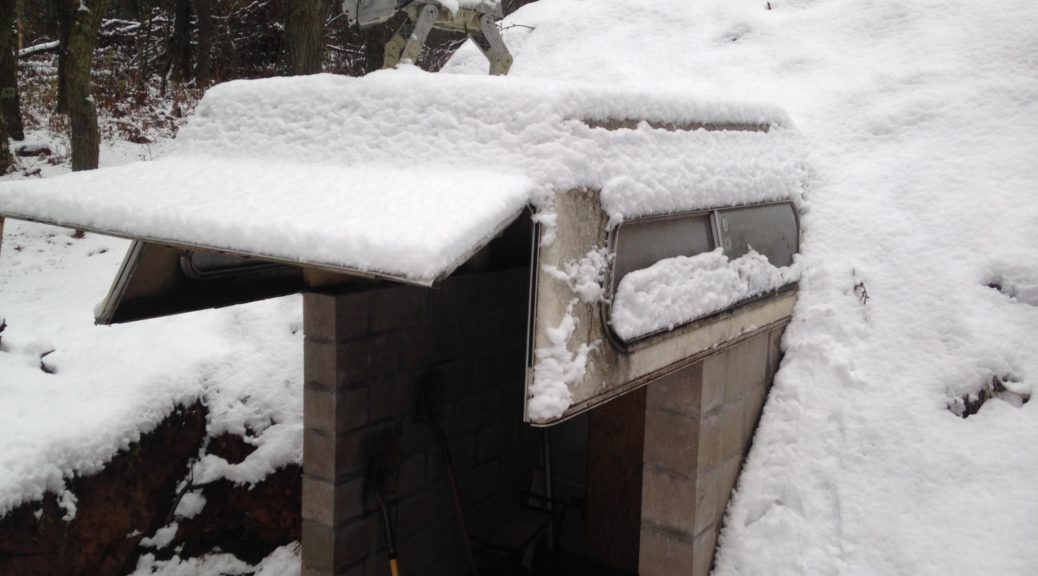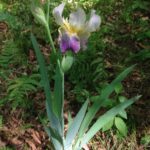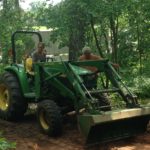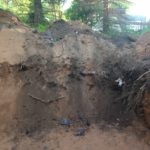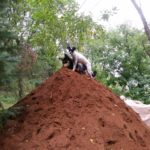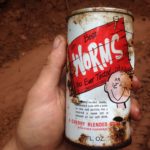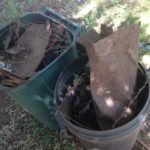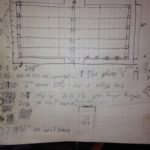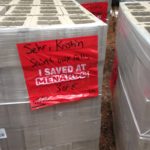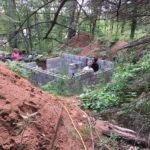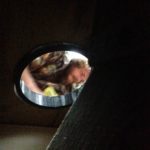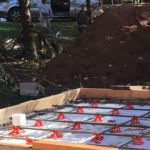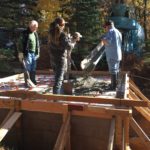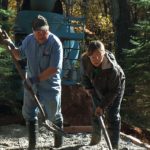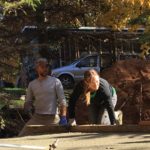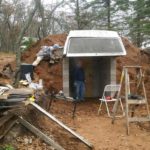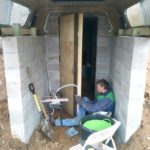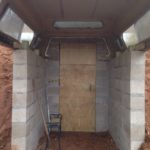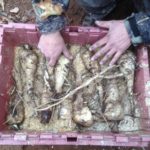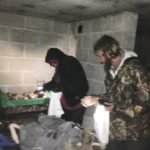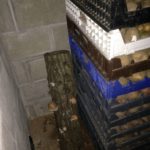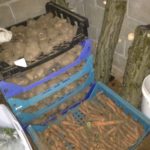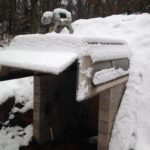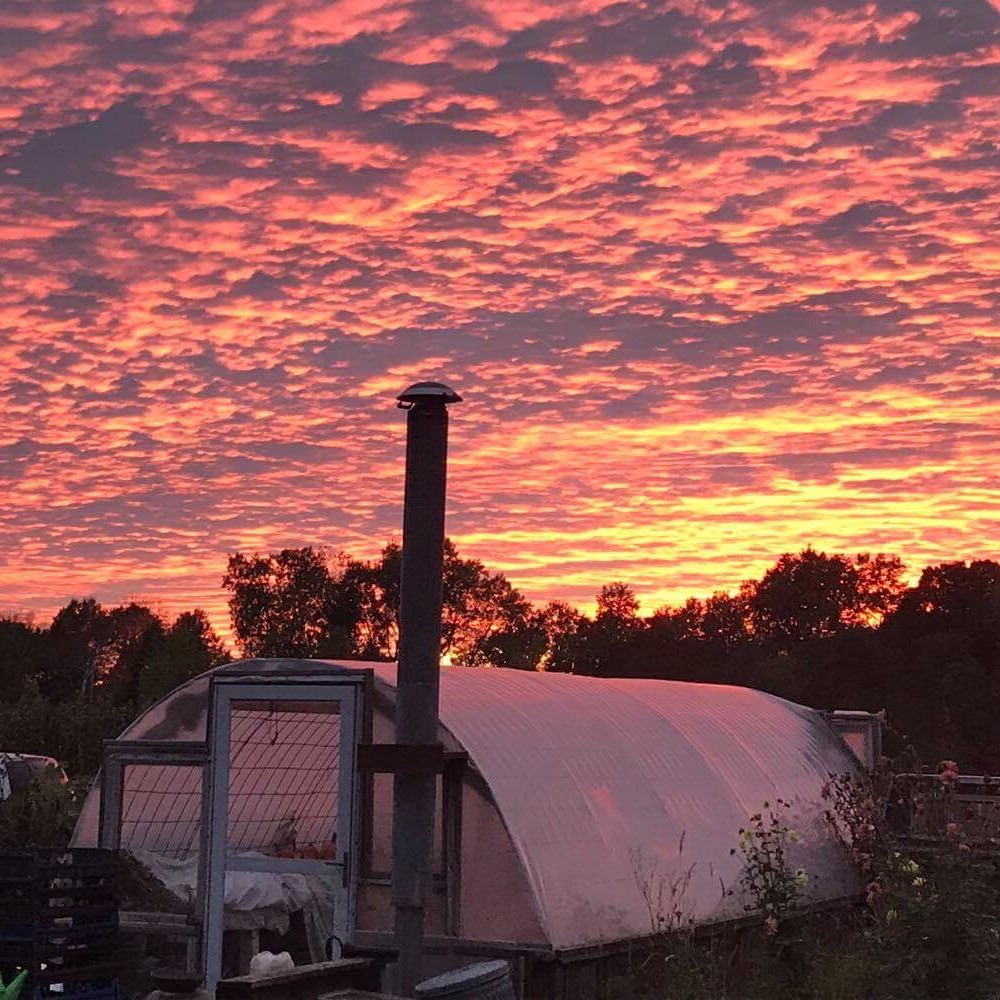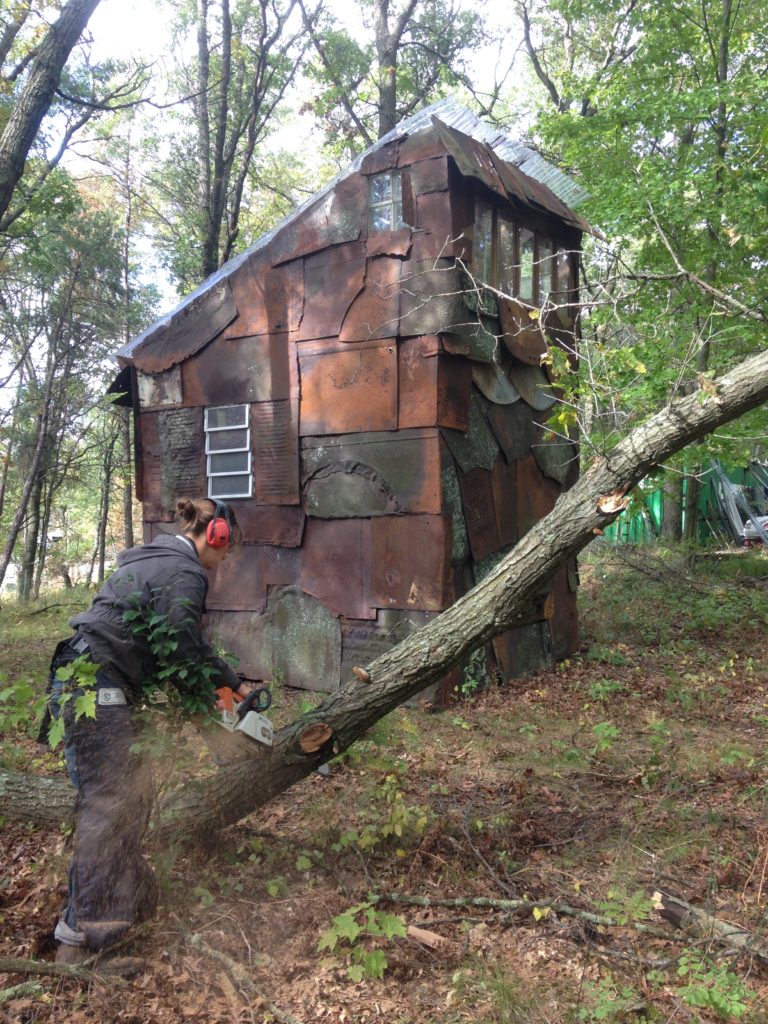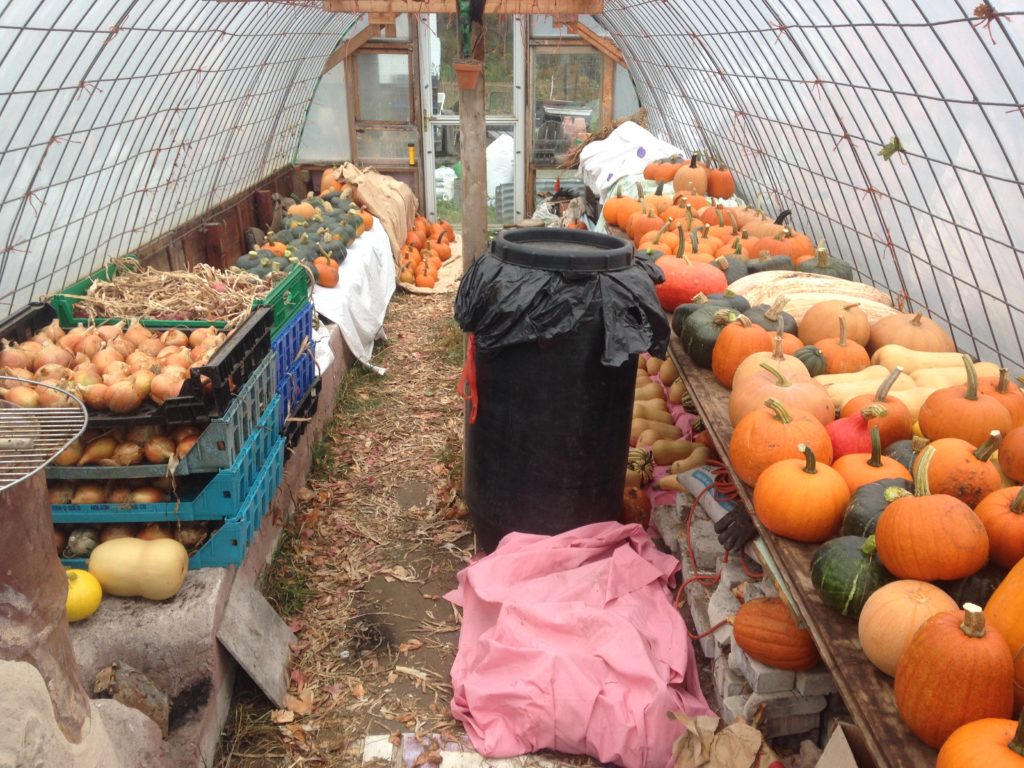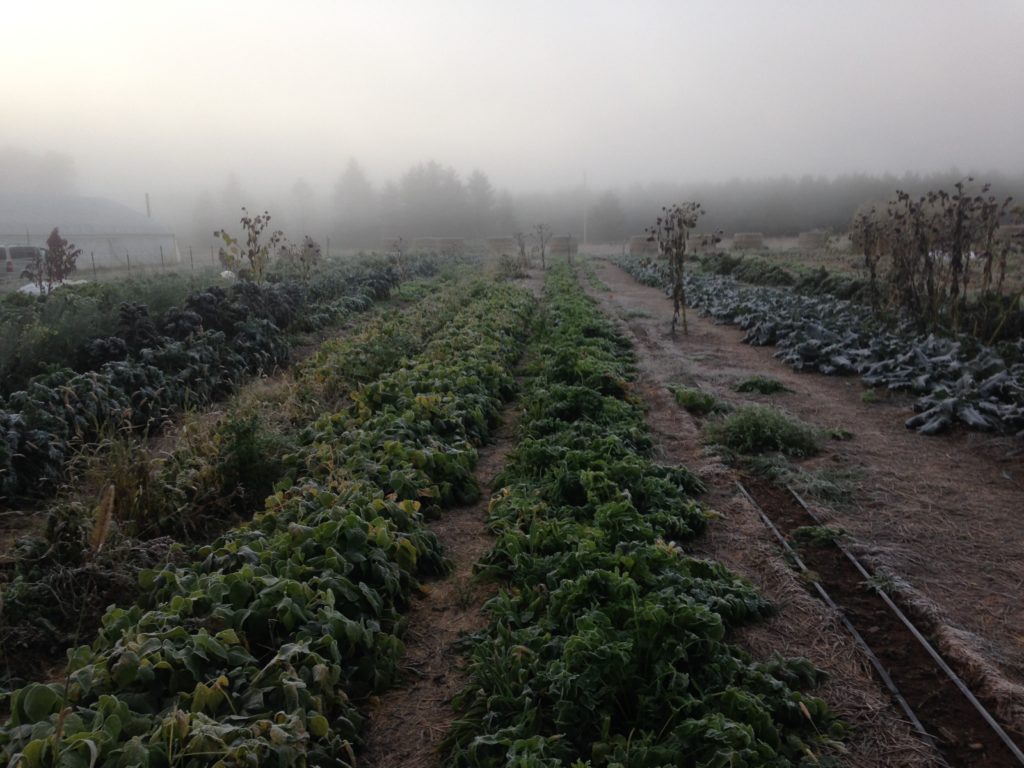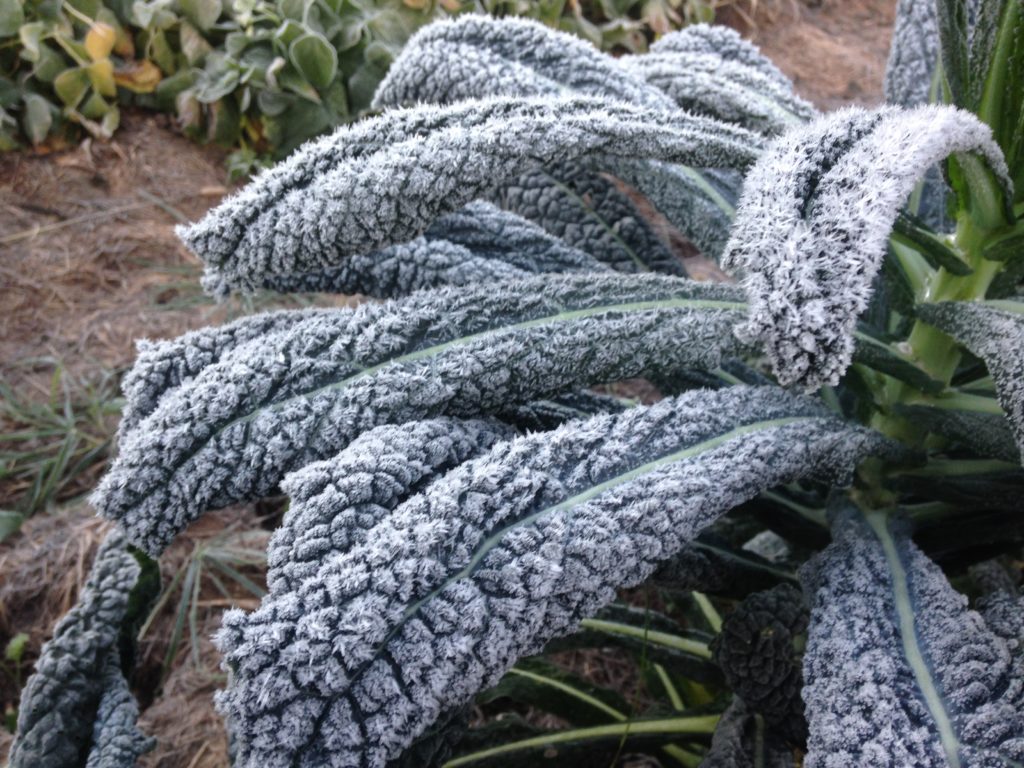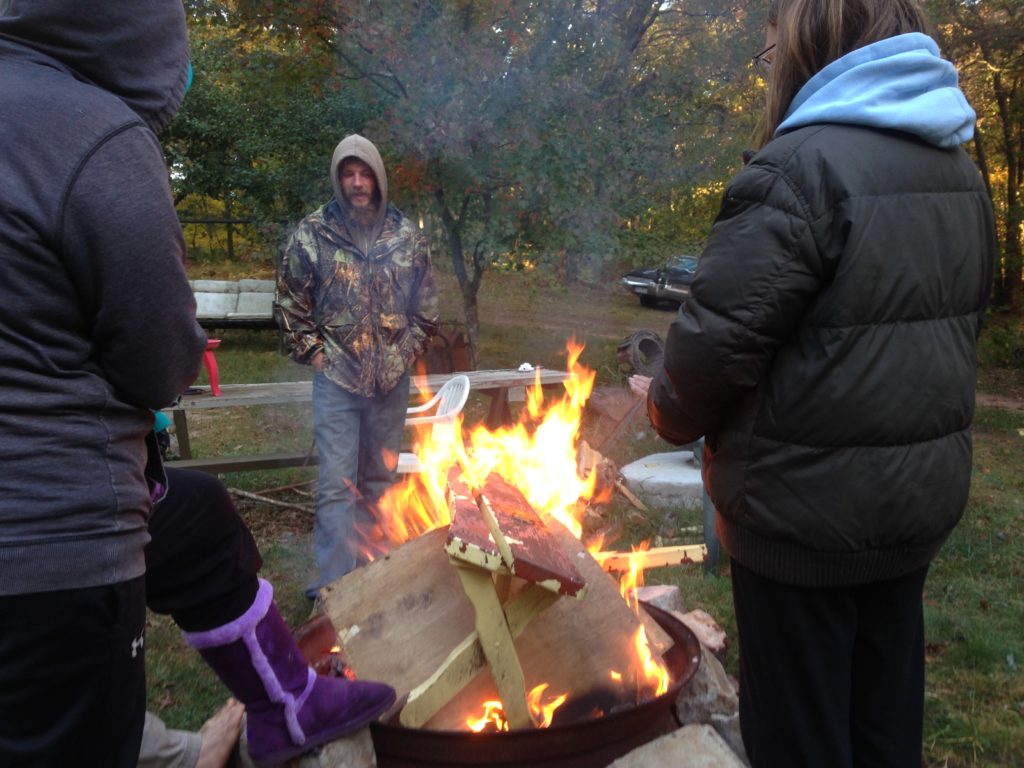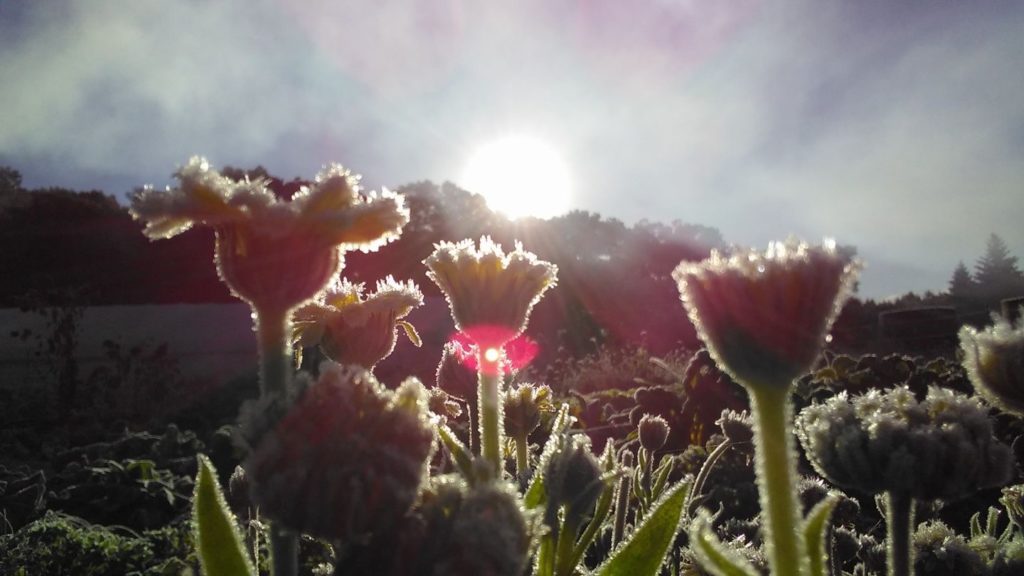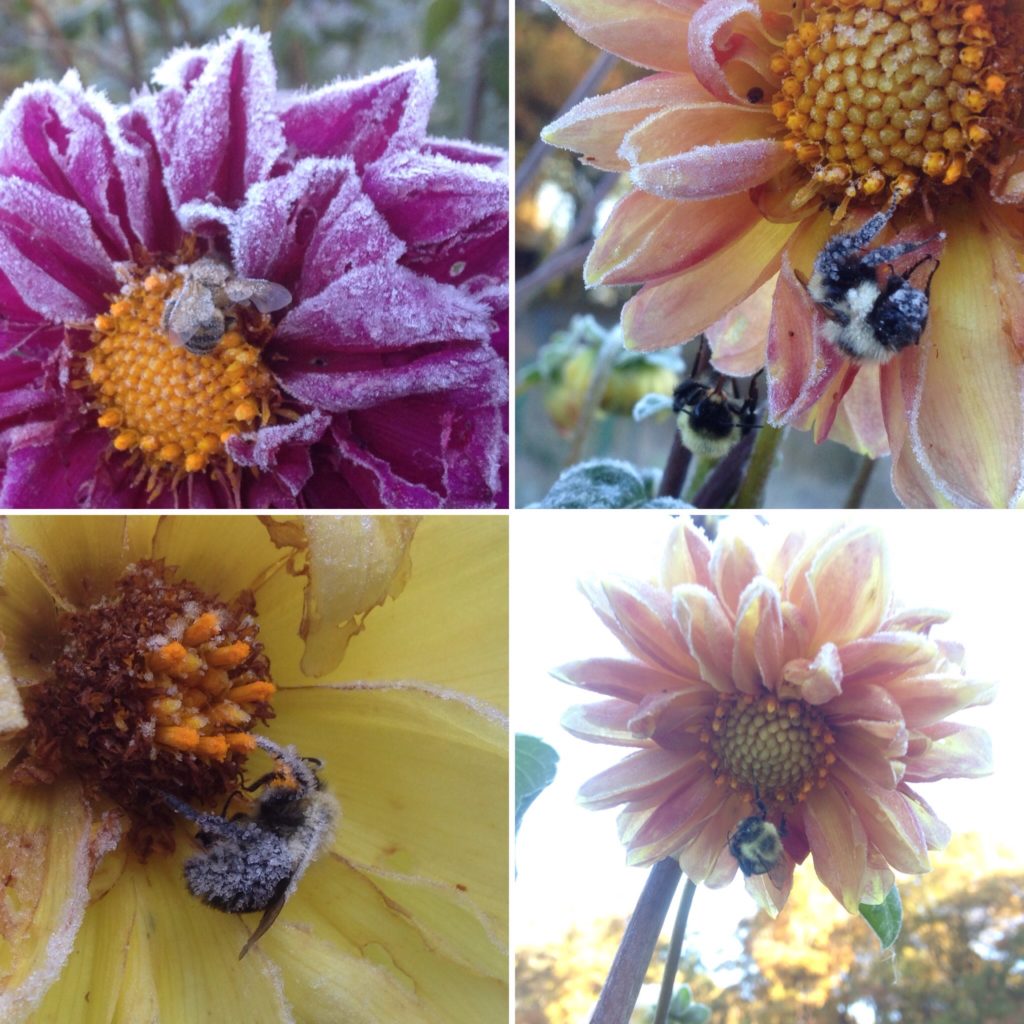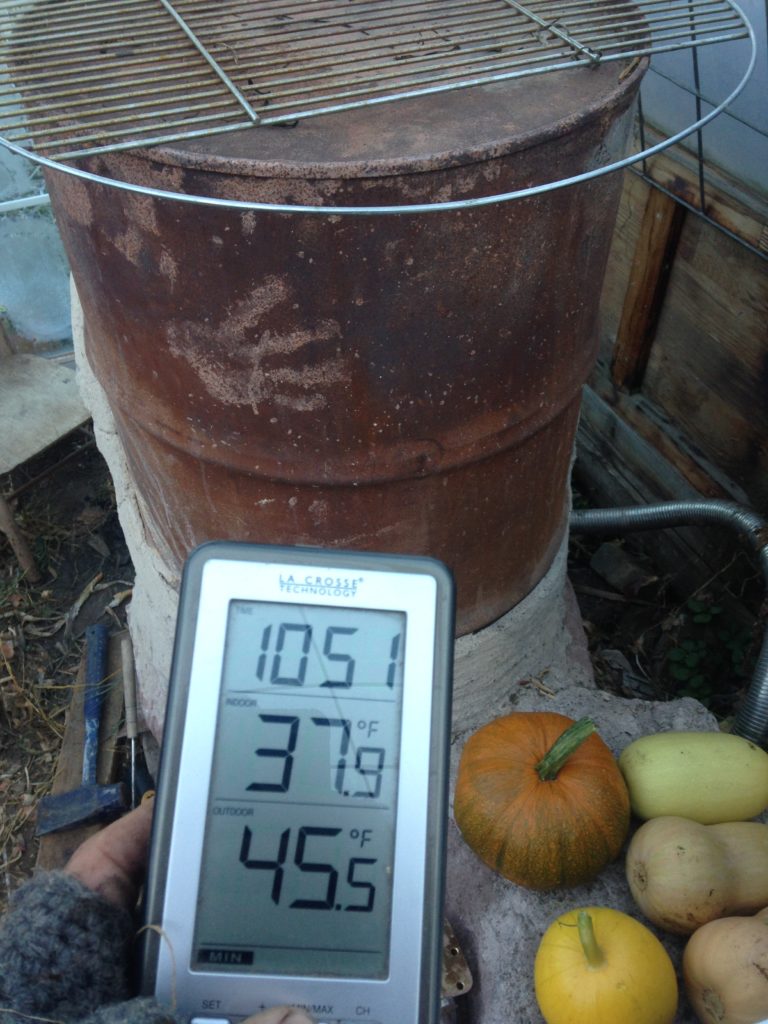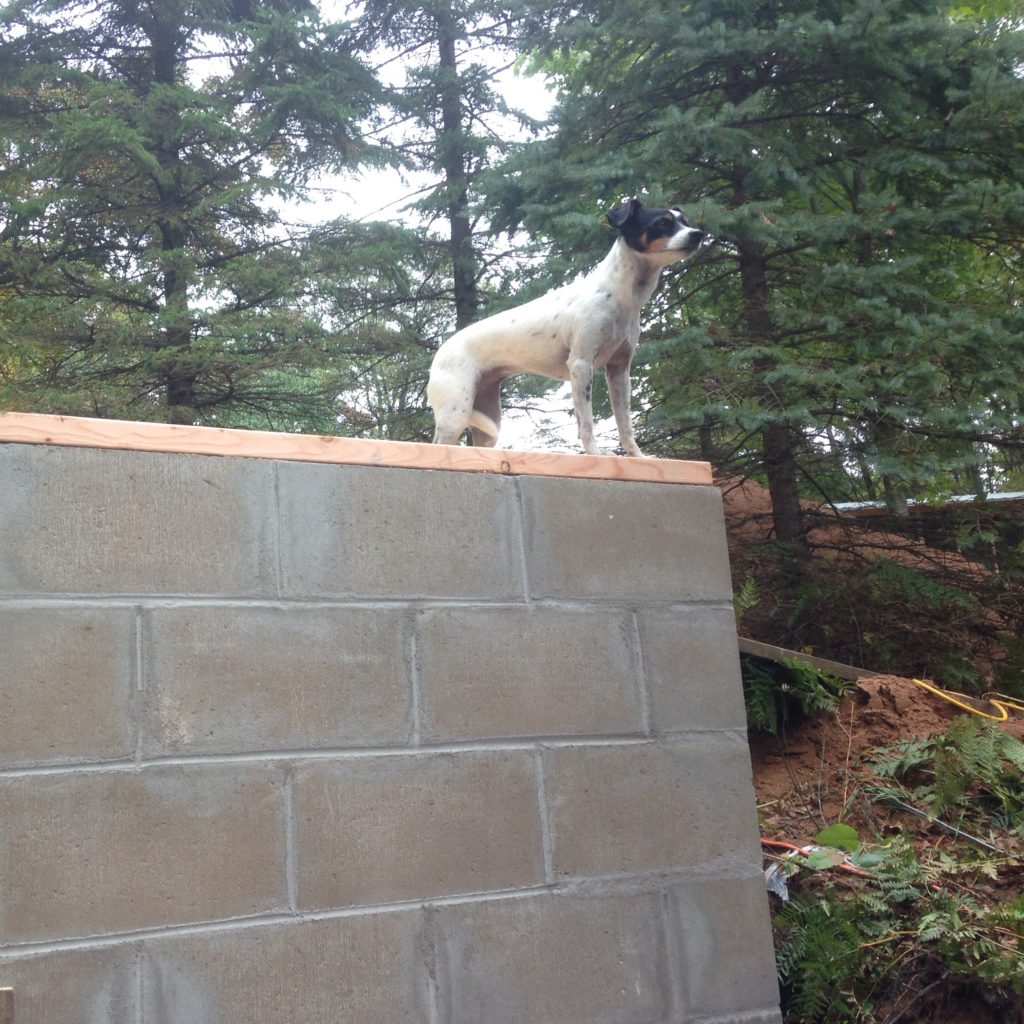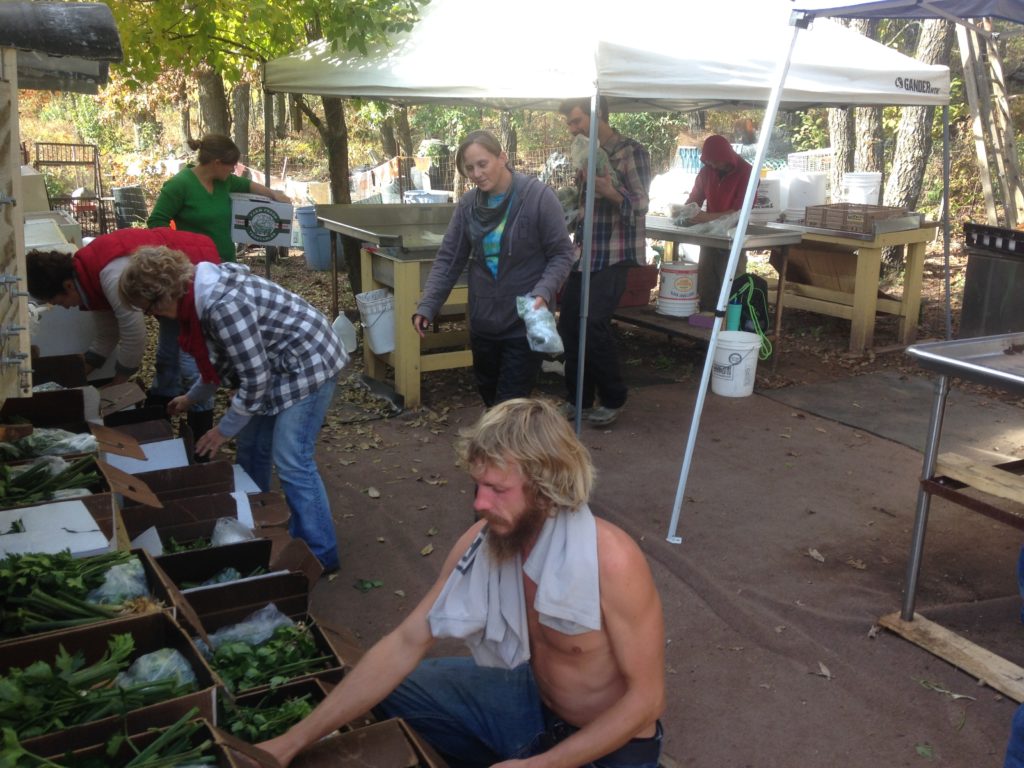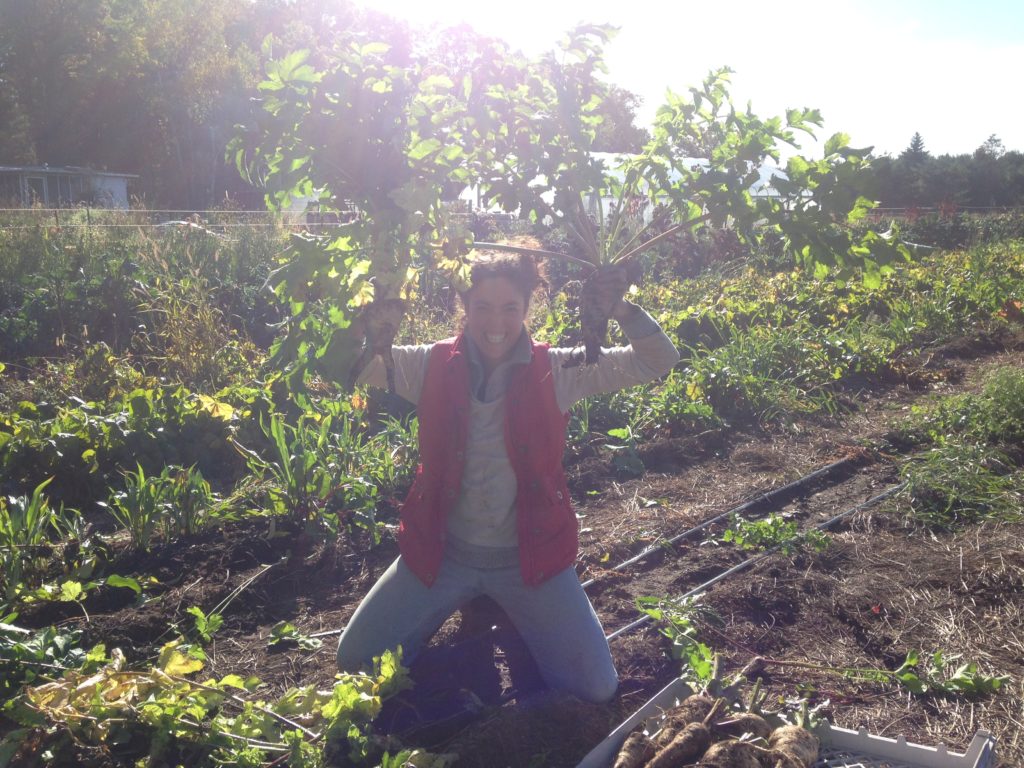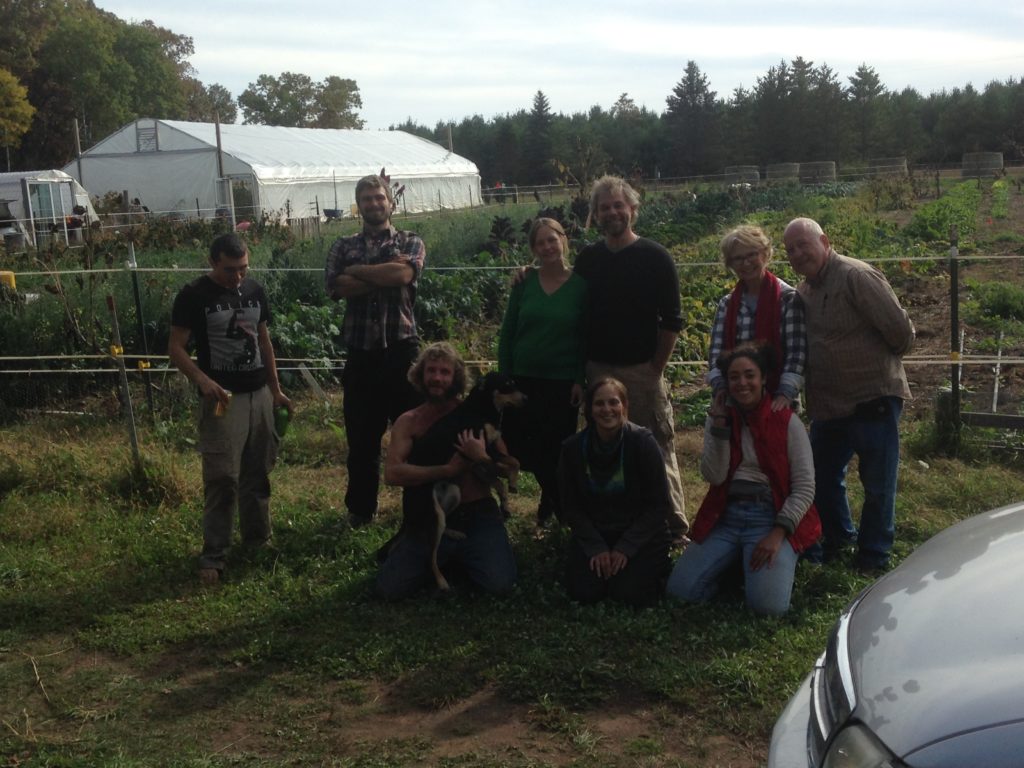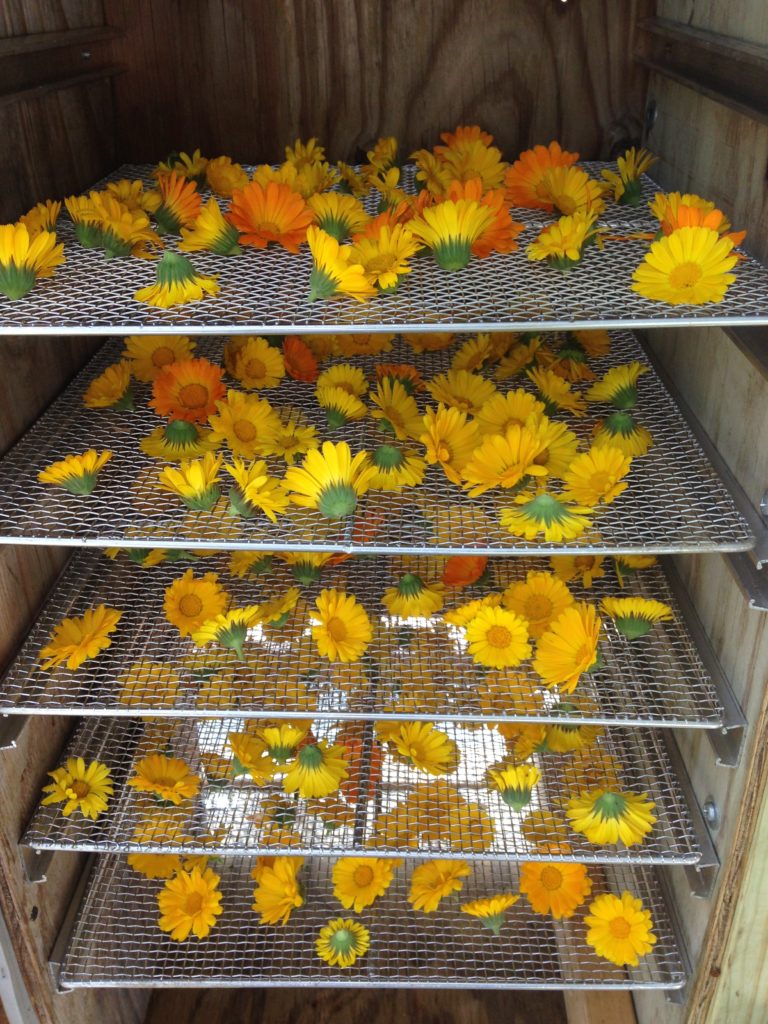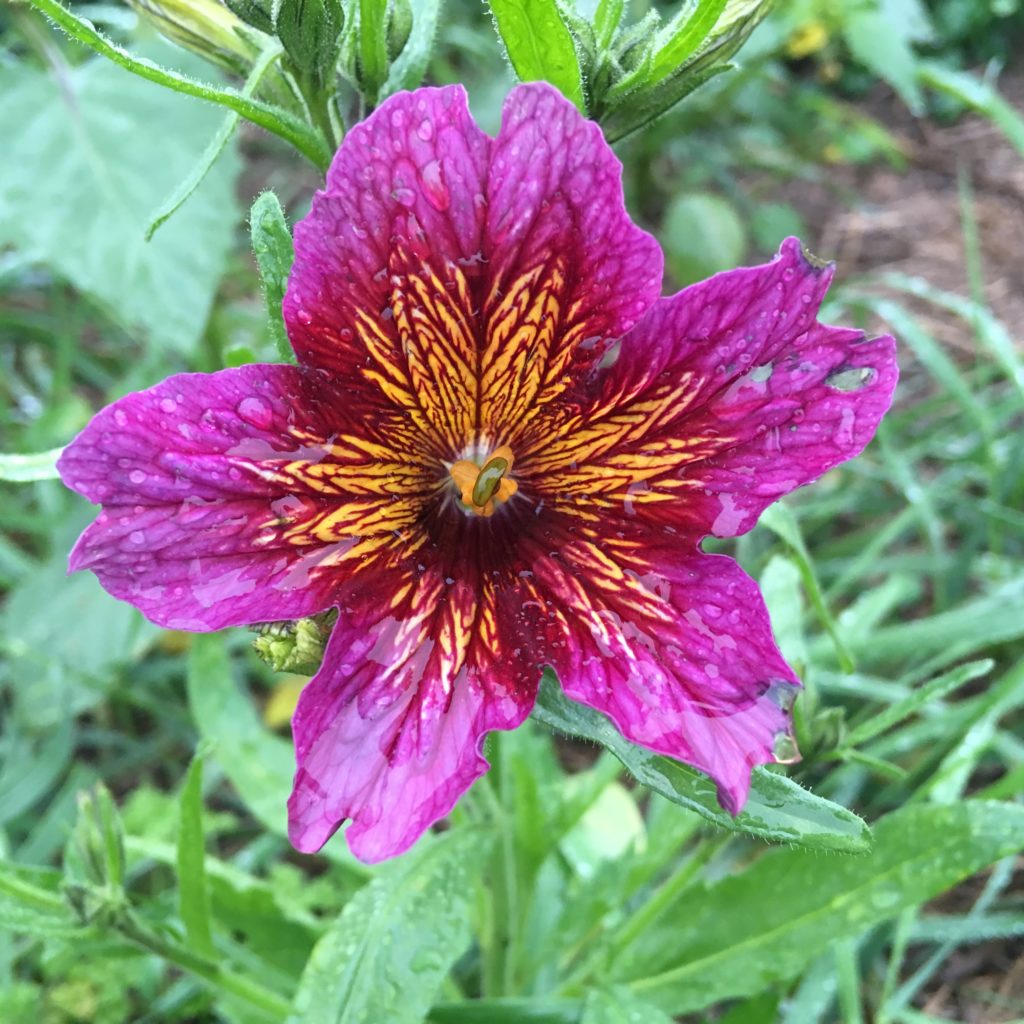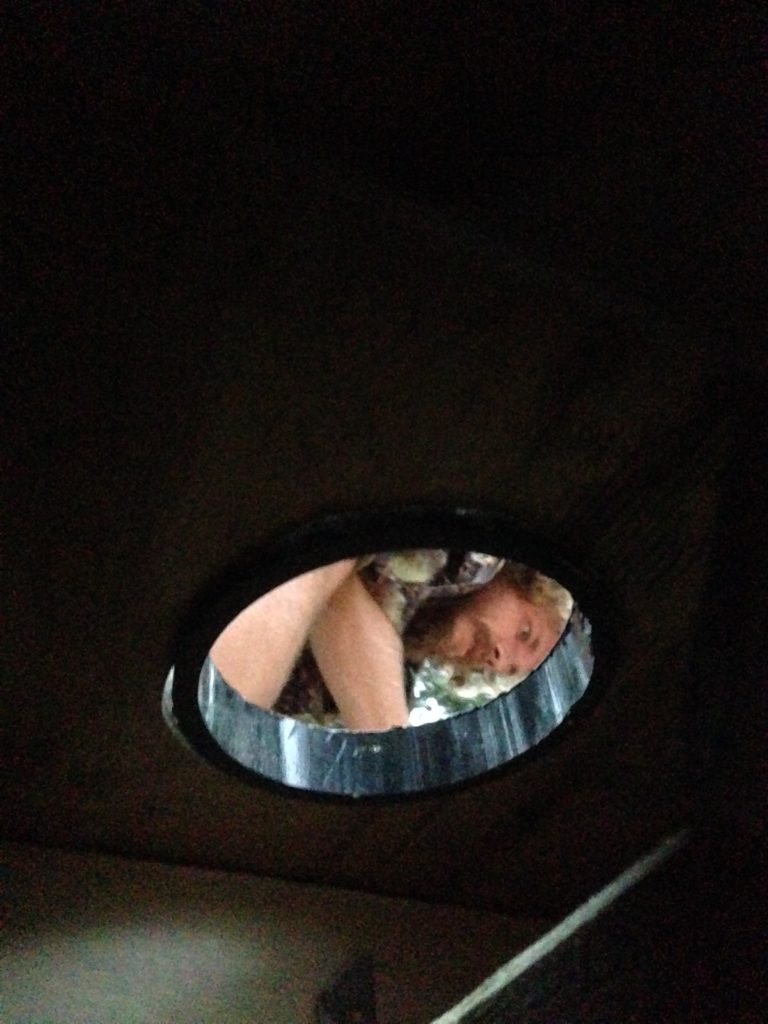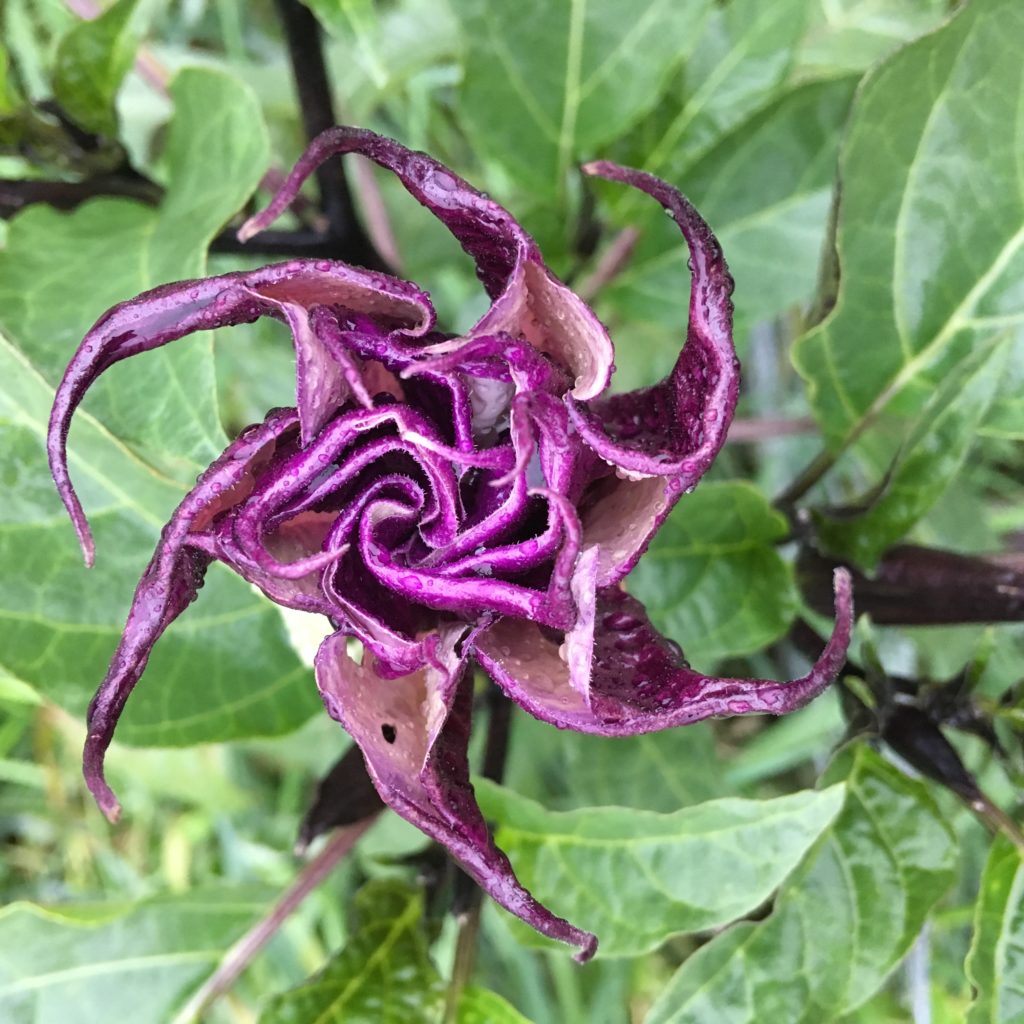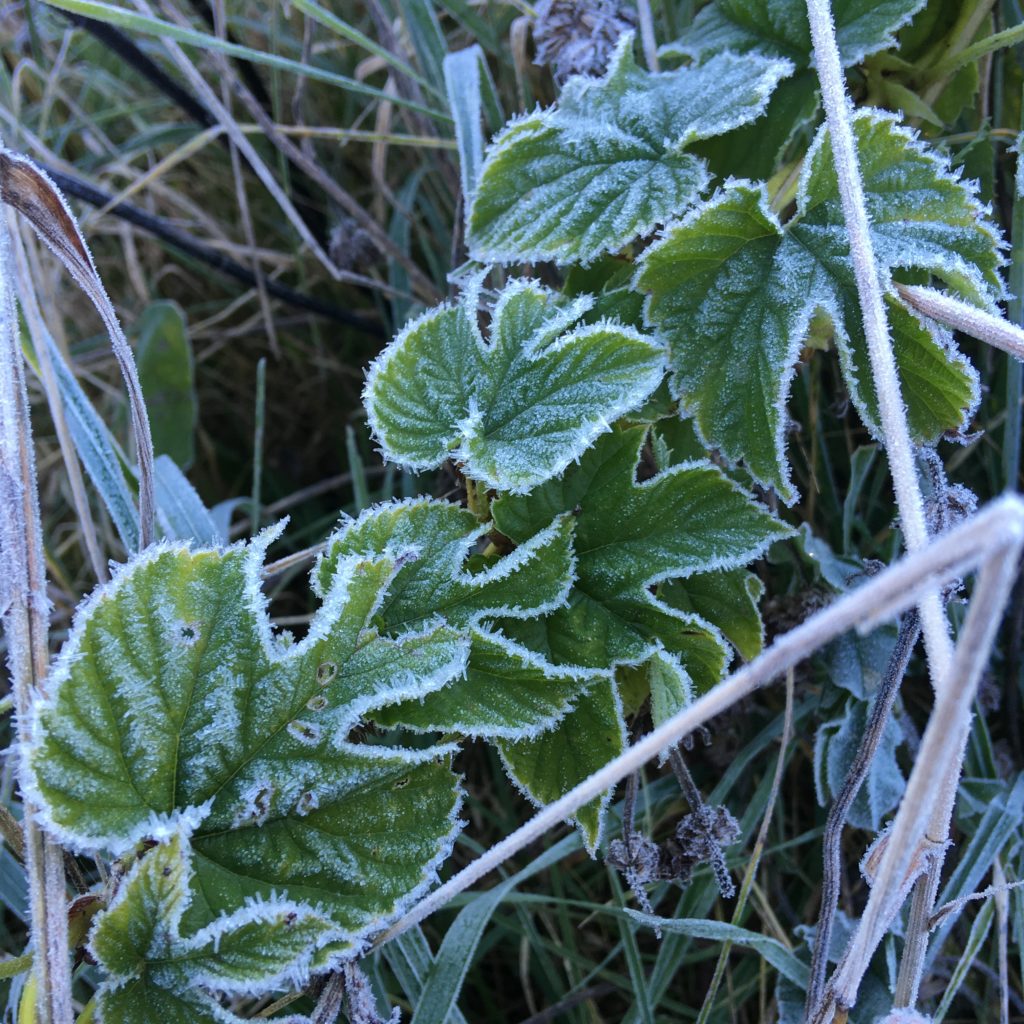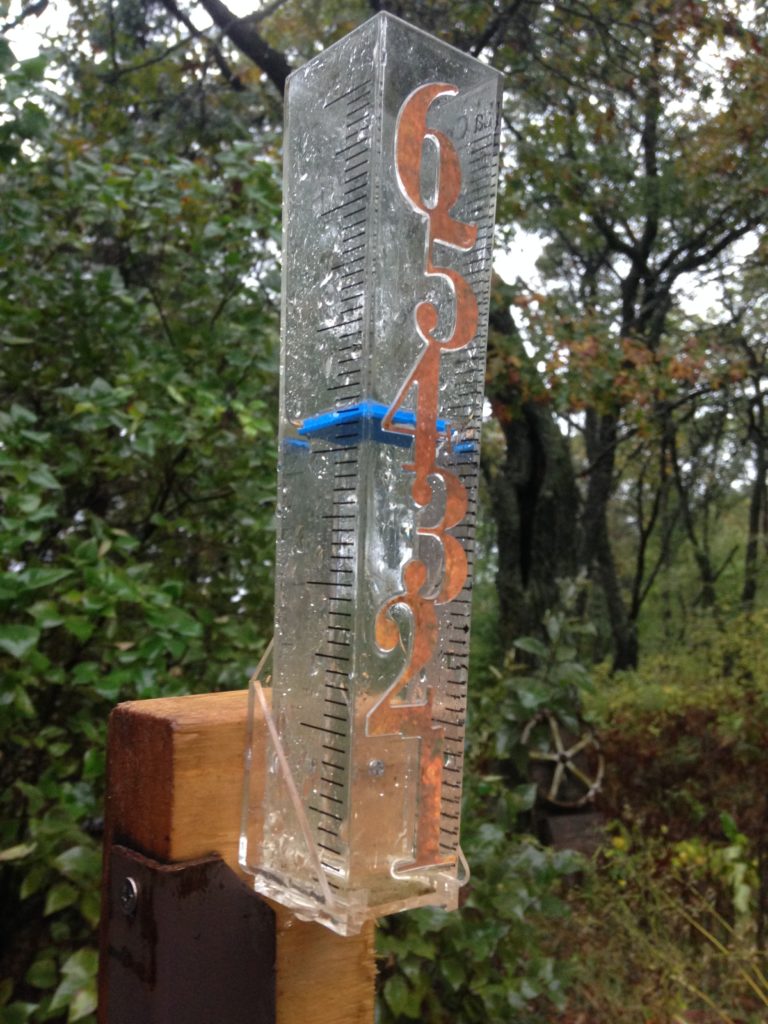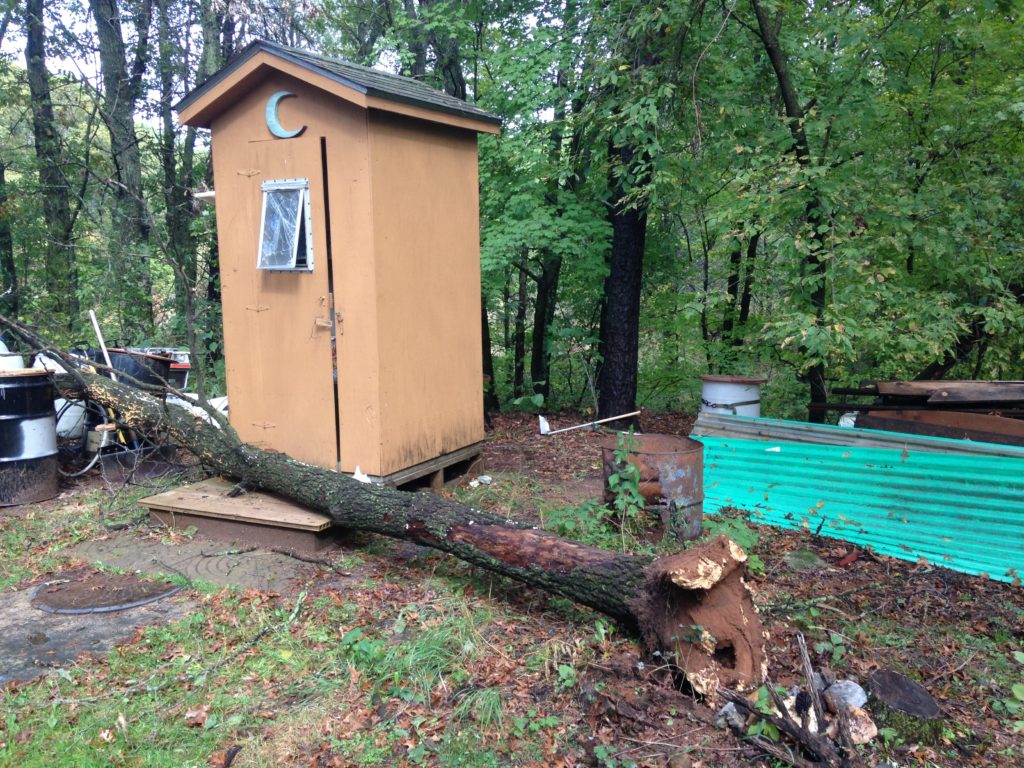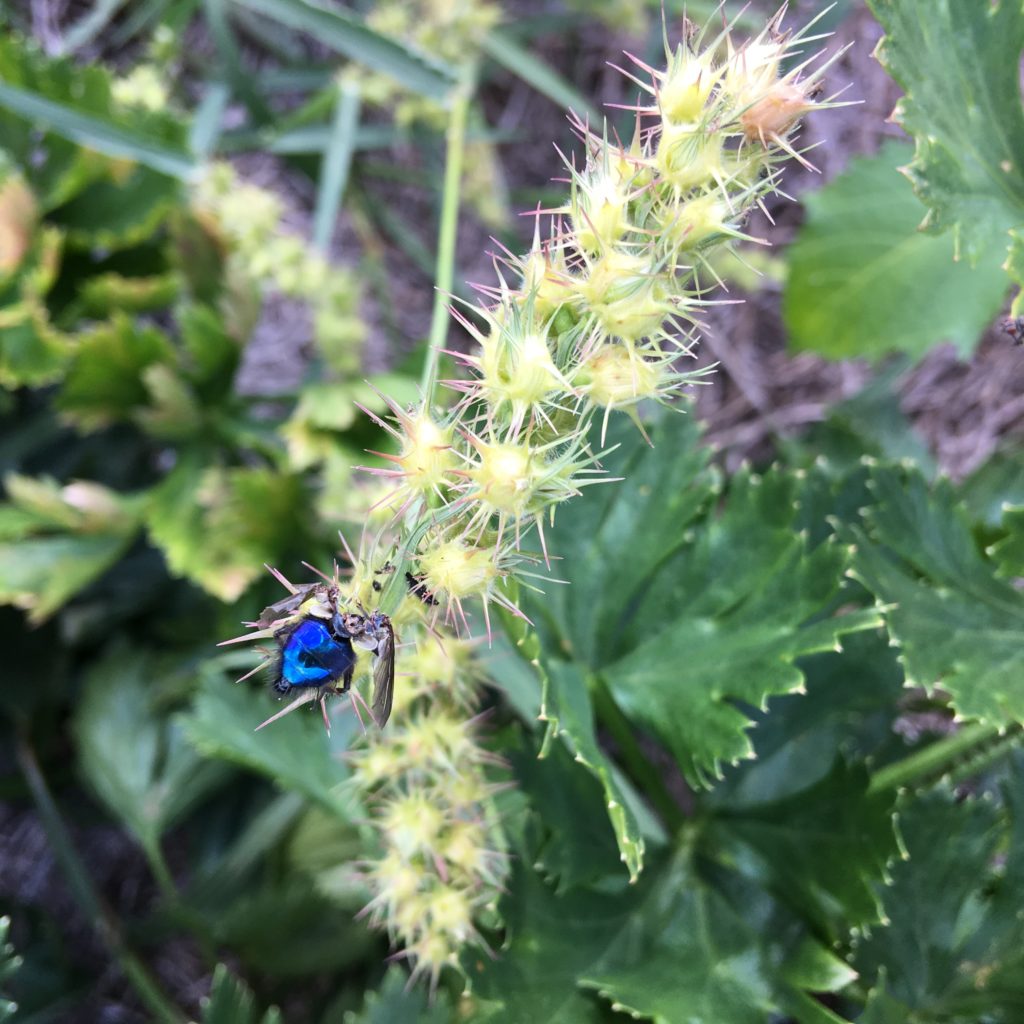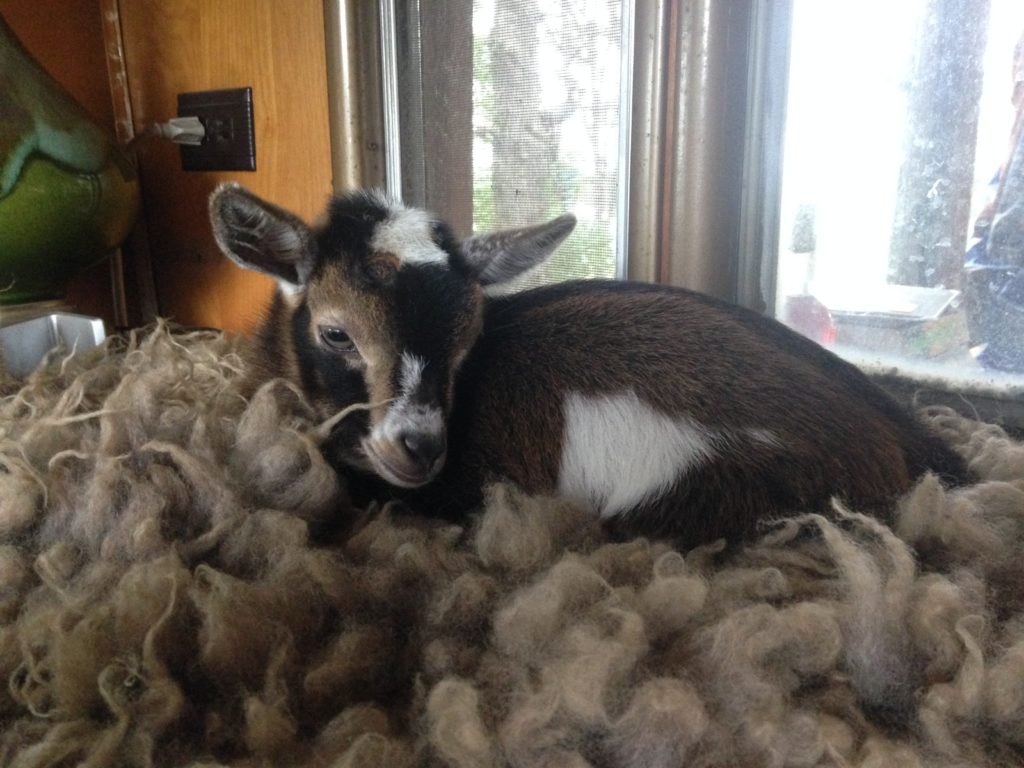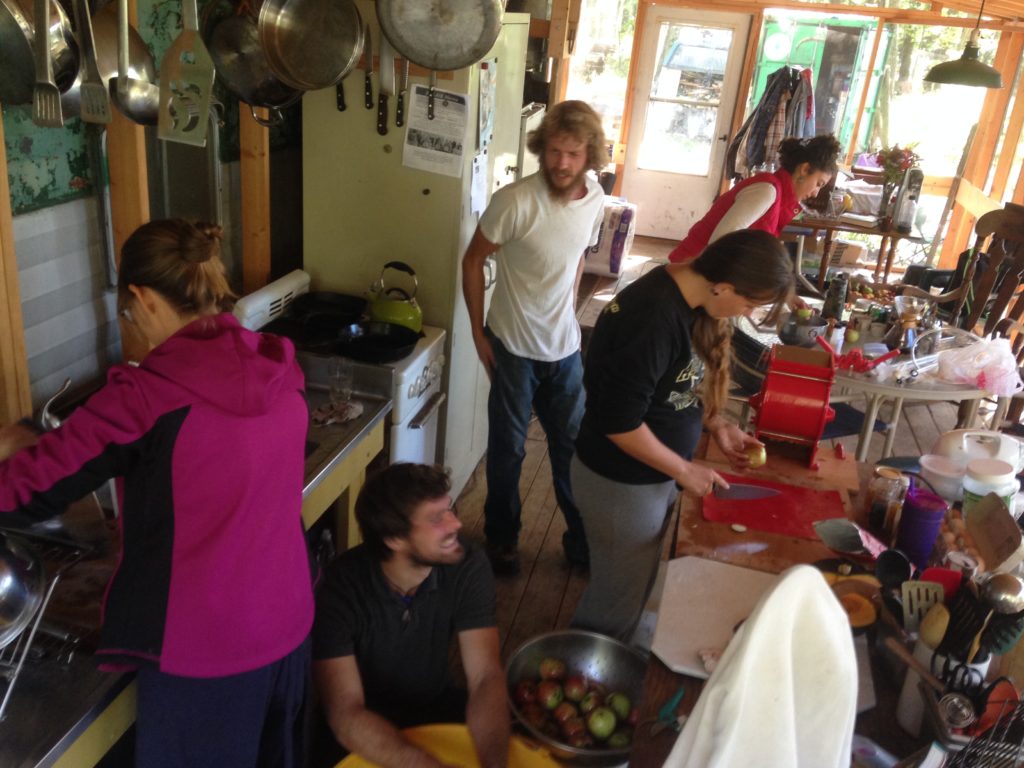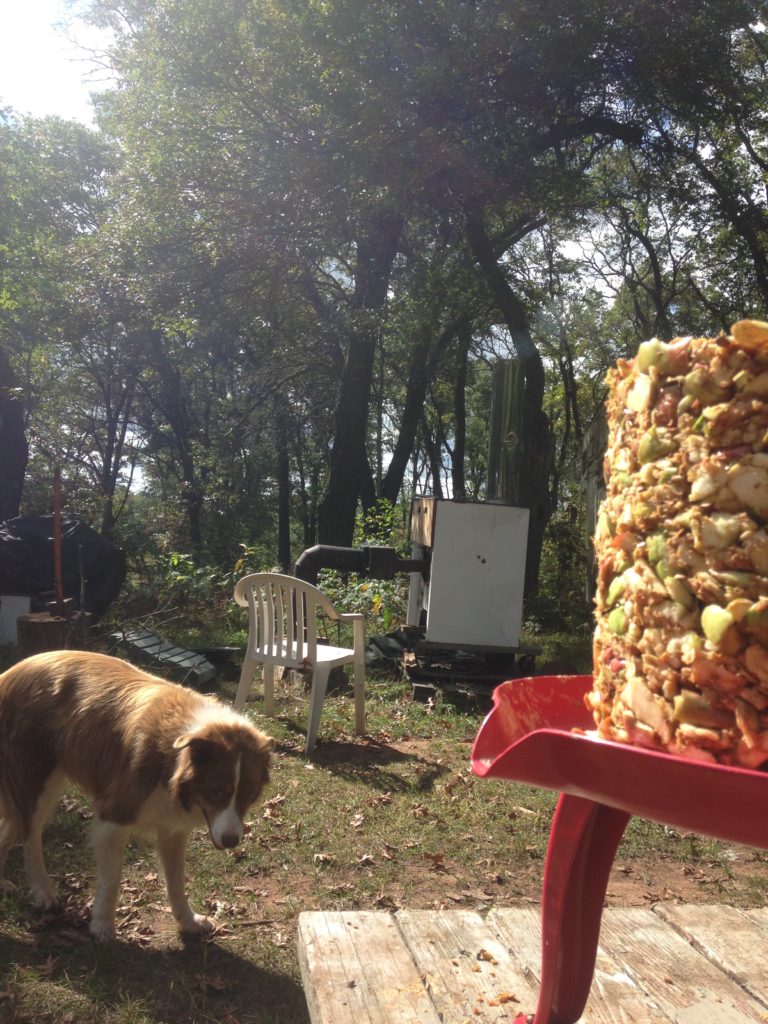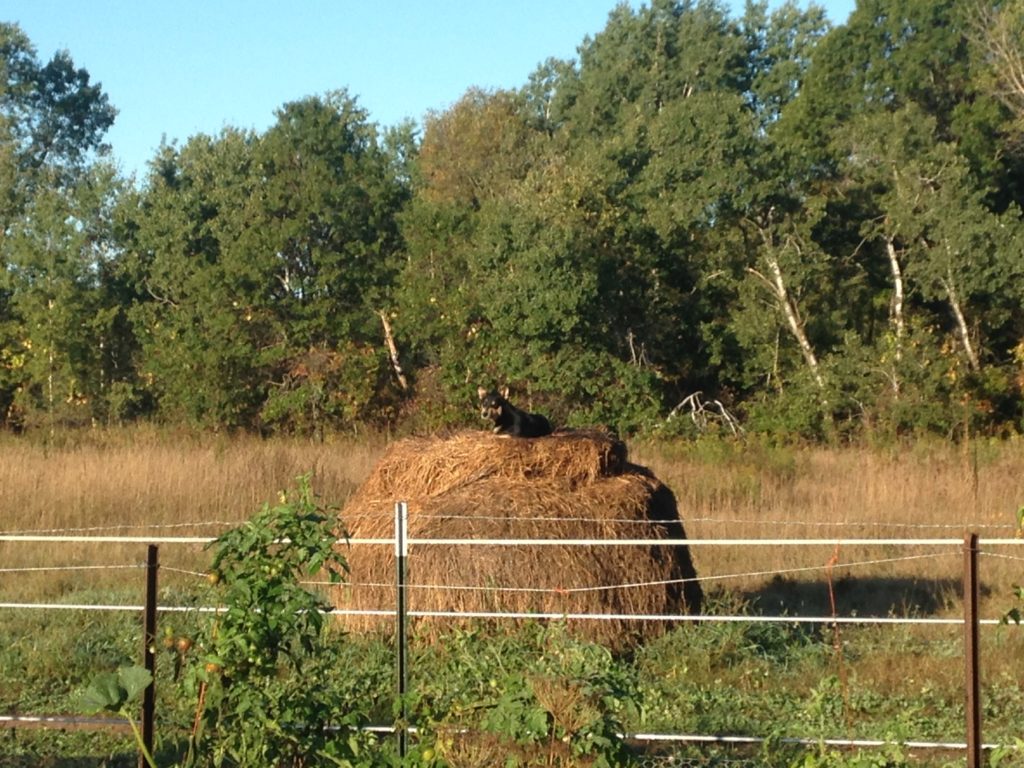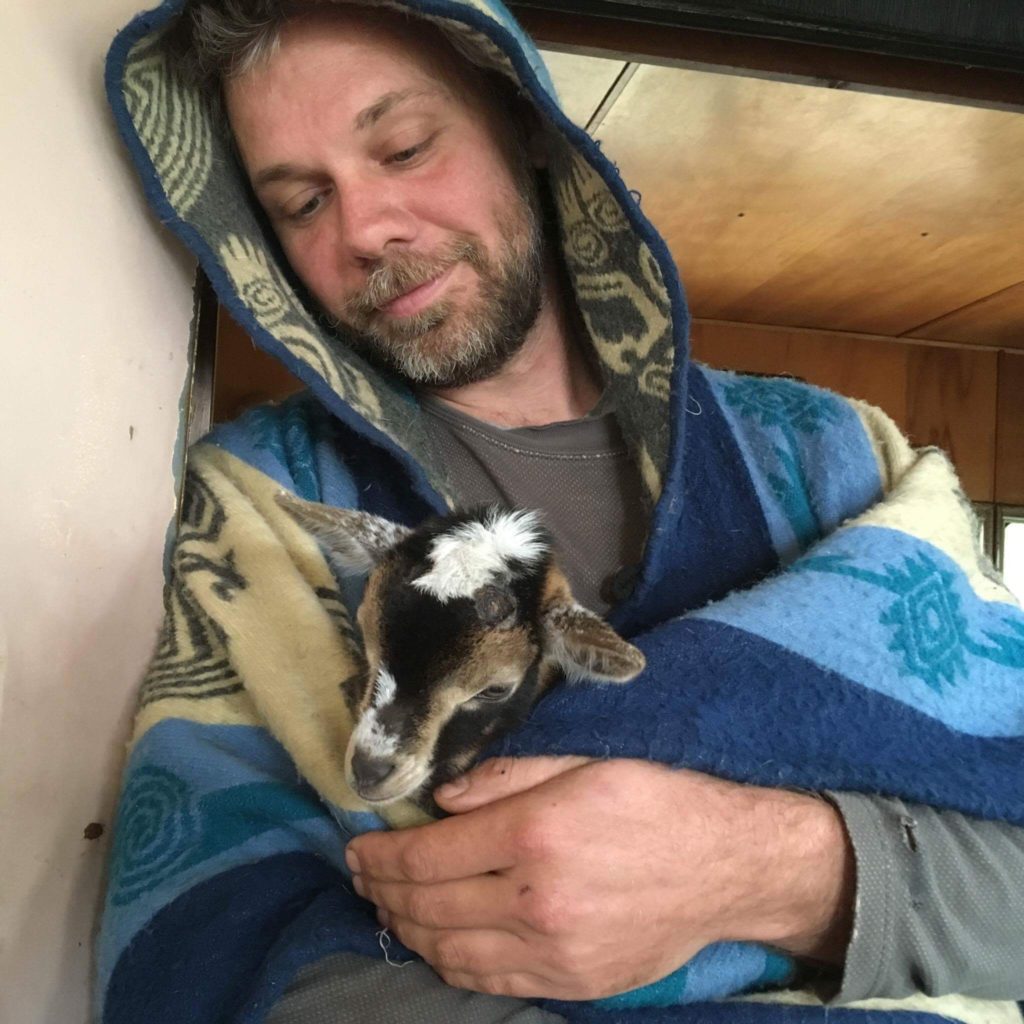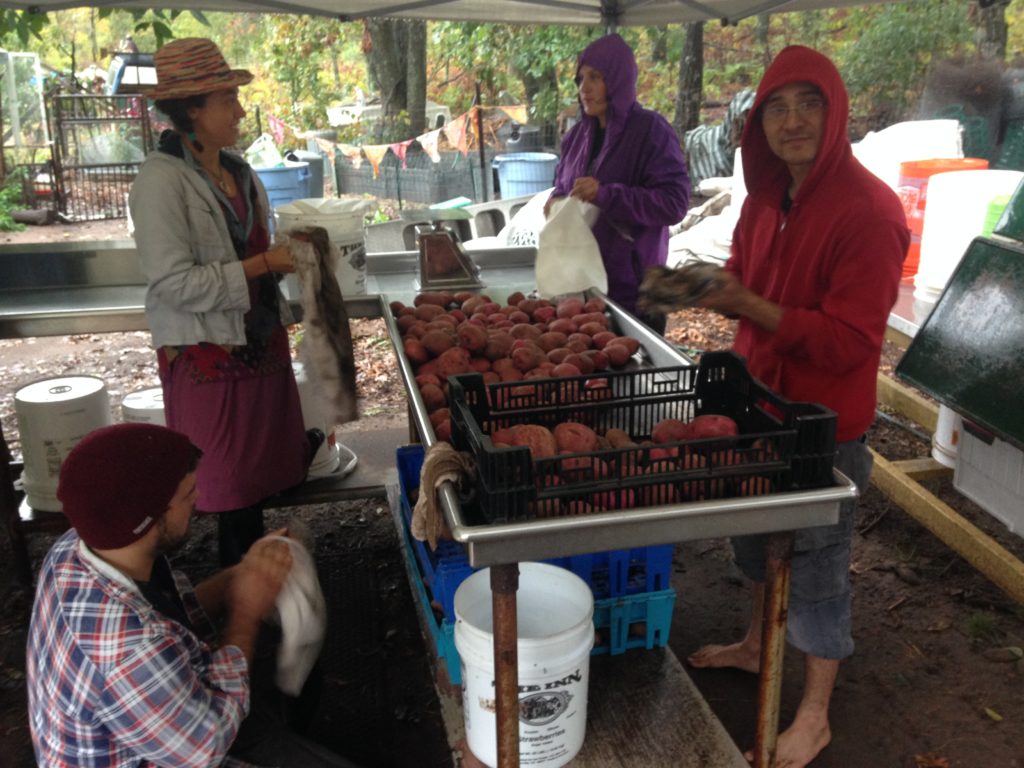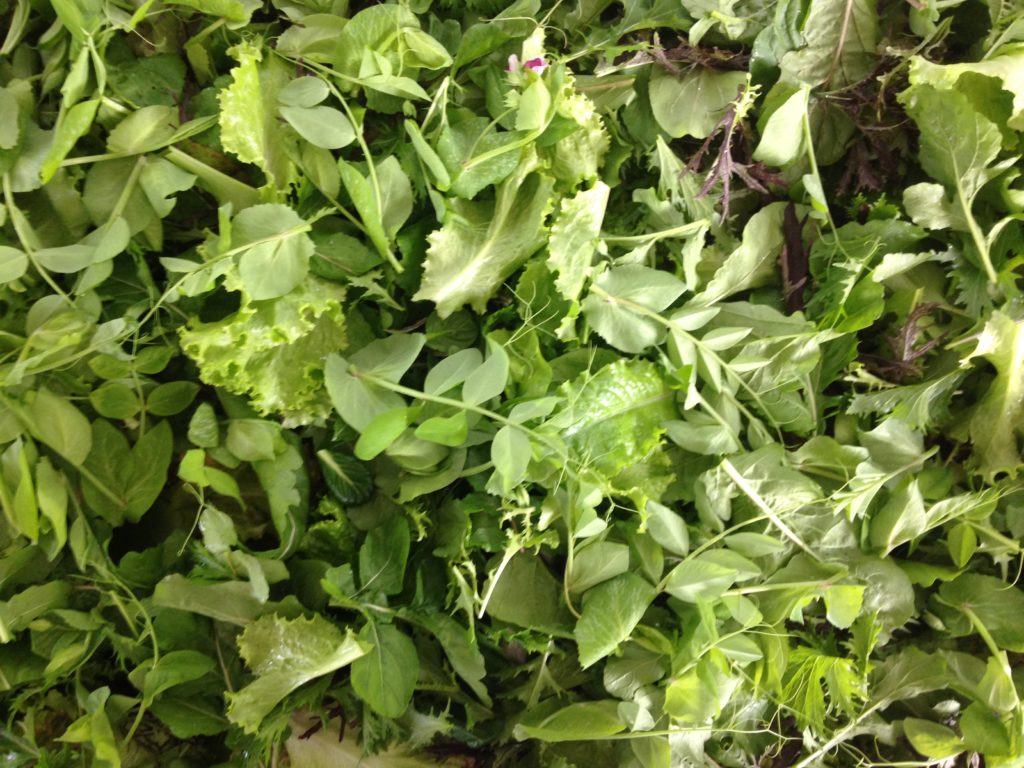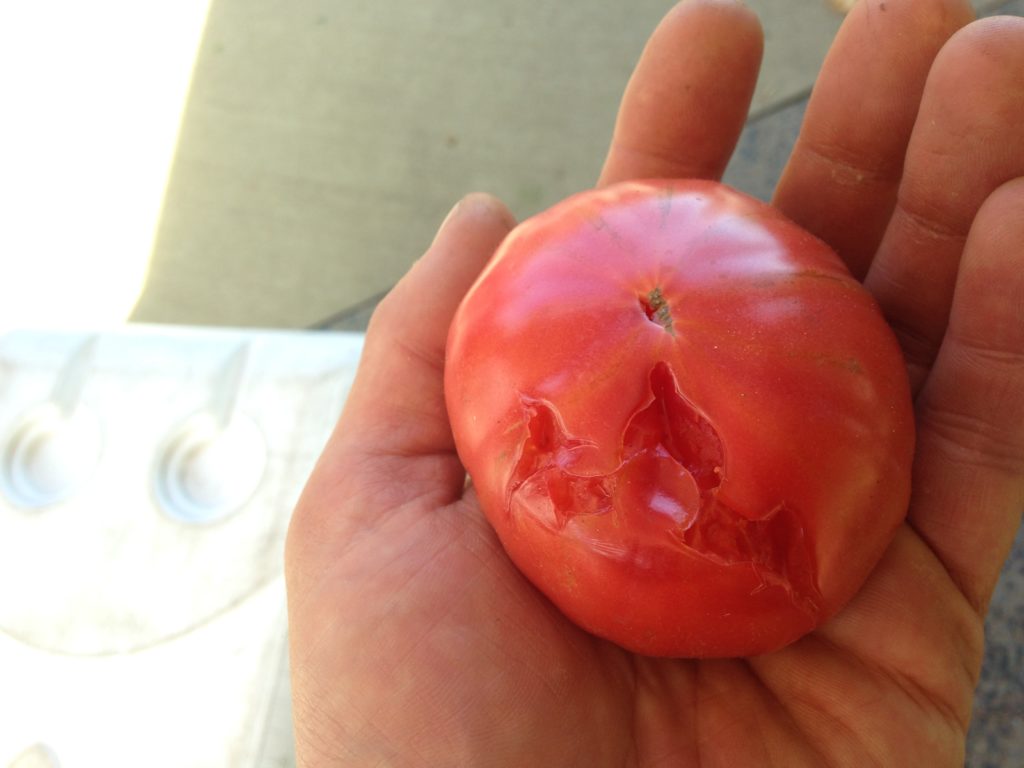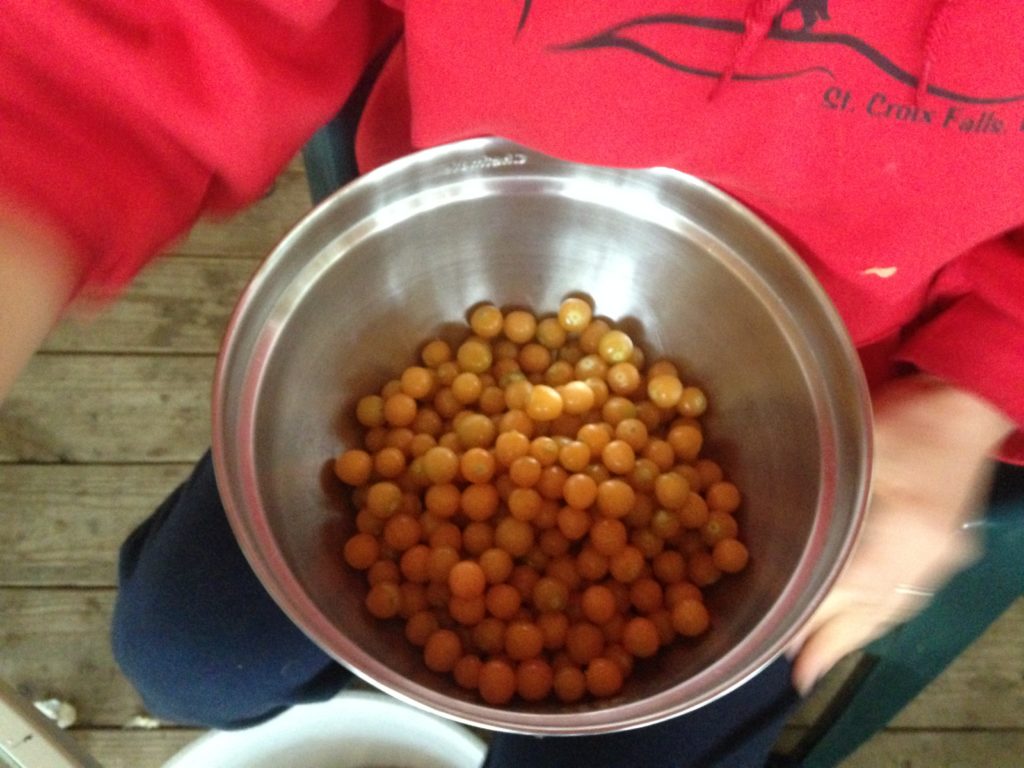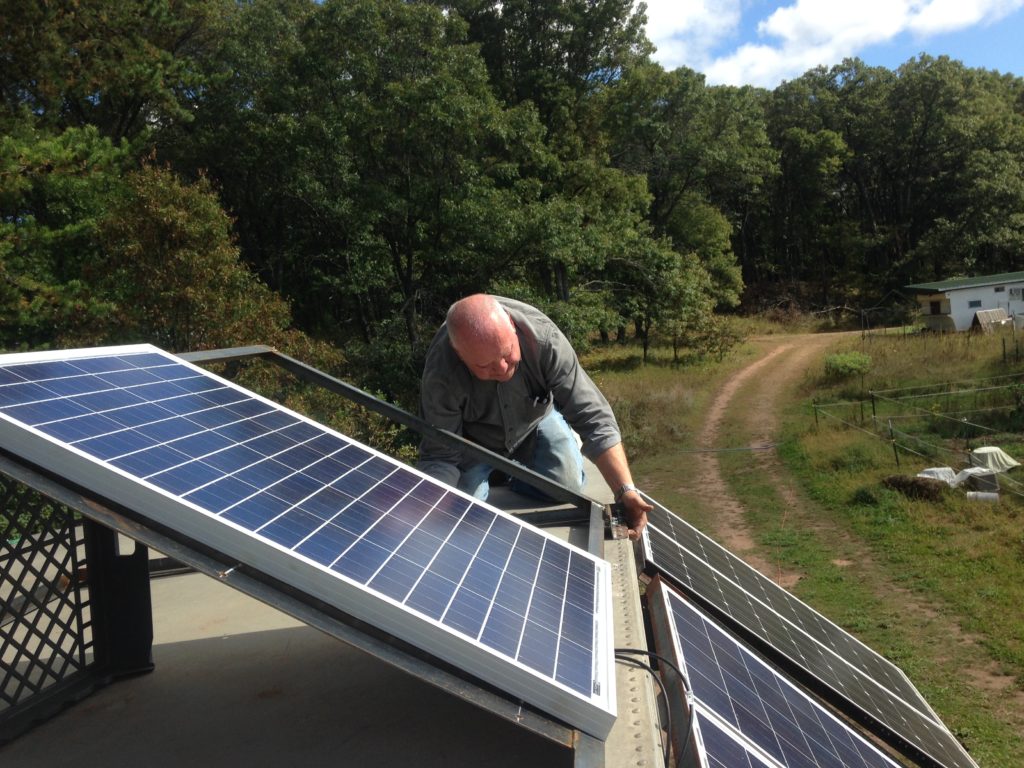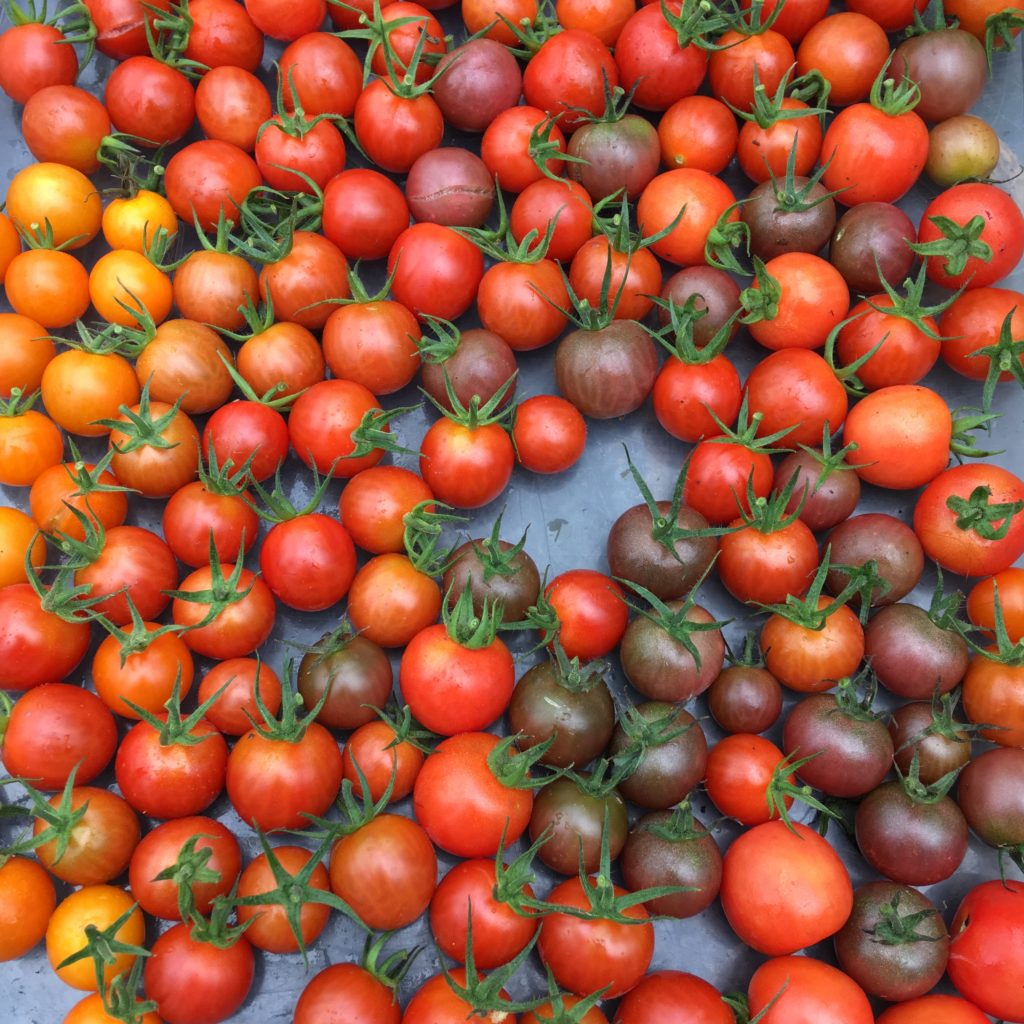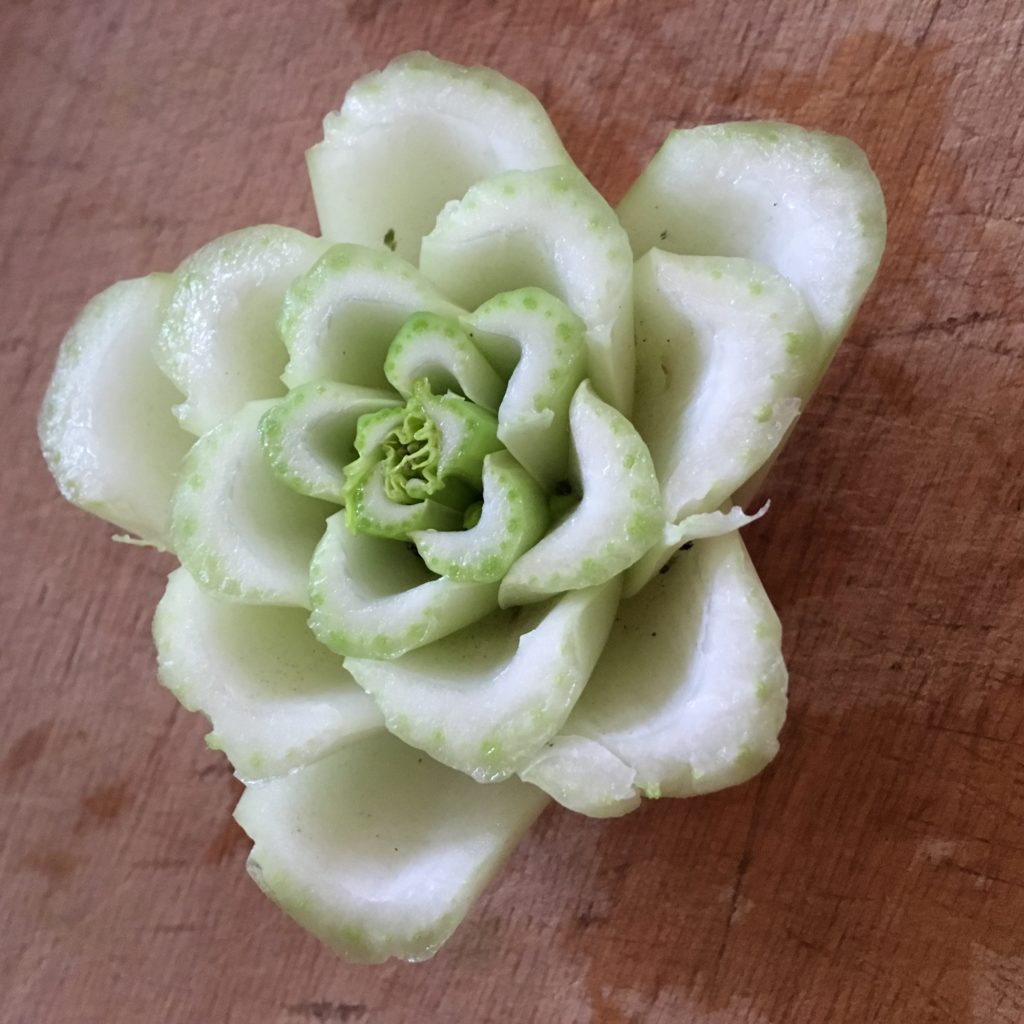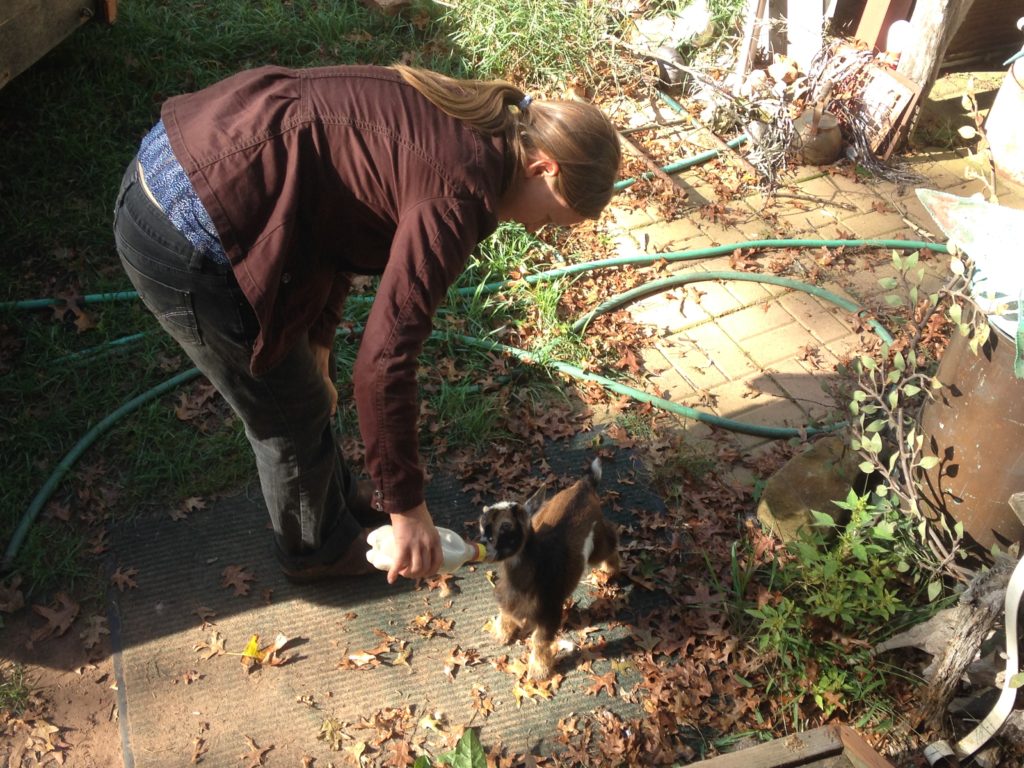We got more rain this week, but it seems that the weeds rejoiced harder than we did. To be honest, it’s tricky not to be disheartened, walking through the field and seeing how beastly the weeds are, how little the crops are, and how behind things are in contrast to last year’s field – when we had more help, no baby, and several additional weeks of springtime to work with.
But hey, it’s another great opportunity to practice our “que sera, sera” perspectives, be reminded that the struggle IS the blessing, that our stresses take place within a context of amazing luck … and hey, it’s kind of fun to conceive of our harvests from the overgrown garden as more akin to foraging than farming. Silver linings abound!
We got the potato rows weeded and started making potato beetle genocide patrols. Got our first tow hay mulched – the brassicas and edge of the adjacent bean row. We transplanted out flowers, ground cherries, garden huckleberries, and filled in gaps in the potato rows with the sprouting taters still lurking in the back of the root cellar.
Late season crops were seeded – fall broccoli, cabbage, cauliflower, etc got started – and we’ve now started summer squash in trays as well to transplant out – we’d direct seeded it into the field twice but both times almost literally the entire crop was mysteriously destroyed (voles definitely had a hand in some of the losses, but they can’t explain it all) – so, there will be a delay of our zucchini game this year.
We attended our first farmers’ market of the year – and Otis experienced the first farmers’ market of his life! It went well – although we didn’t have a ton of variety of fresh produce to sell, we had lots of canned goods from last fall to offer. And it was WWOOFer Amelia’s last week on the farm – so next week we’ll be even less-handed. Should be interesting!
CSA Box 2
A little of this, a little of that
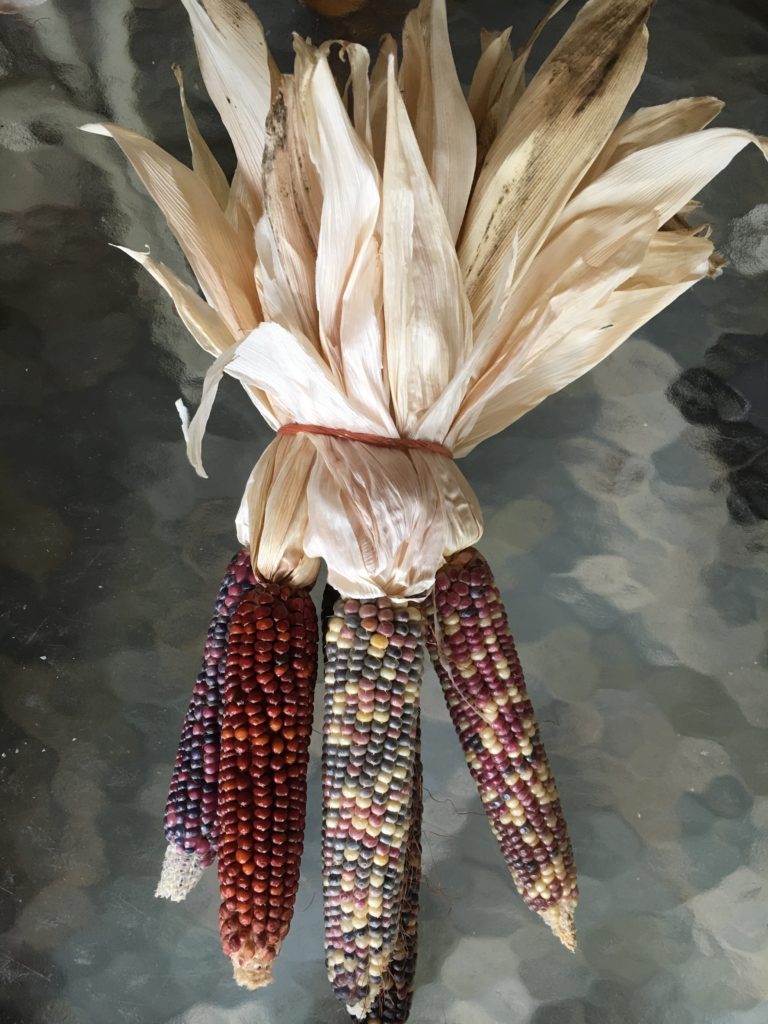
Cornmeal – Last autumn’s corn, field-dried, and stone-ground fresh yesterday for your baking enjoyment.
When we were in Mississippi I came across a locally produced cornmeal that promoted itself saying it ground corn “no older than a year.” Isn’t it remarkable that less than a year is considered notably fresh? Corn has such a fascinating history, and has changed so much in our lifetime alone. Ok, here is a good recipe that I’ve used to make satisfying cornbread:
https://www.seriouseats.com/
And it has a good link to read too if you are as interested in corn as I (apparently) am.
https://www.seriouseats.com/
You could also try making cornmeal pancakes or johnny cakes.
a Dozen Eggs – A mix from our motley crew of hens. Smaller eggs were likely laid by our newest flock members that hatched last fall.
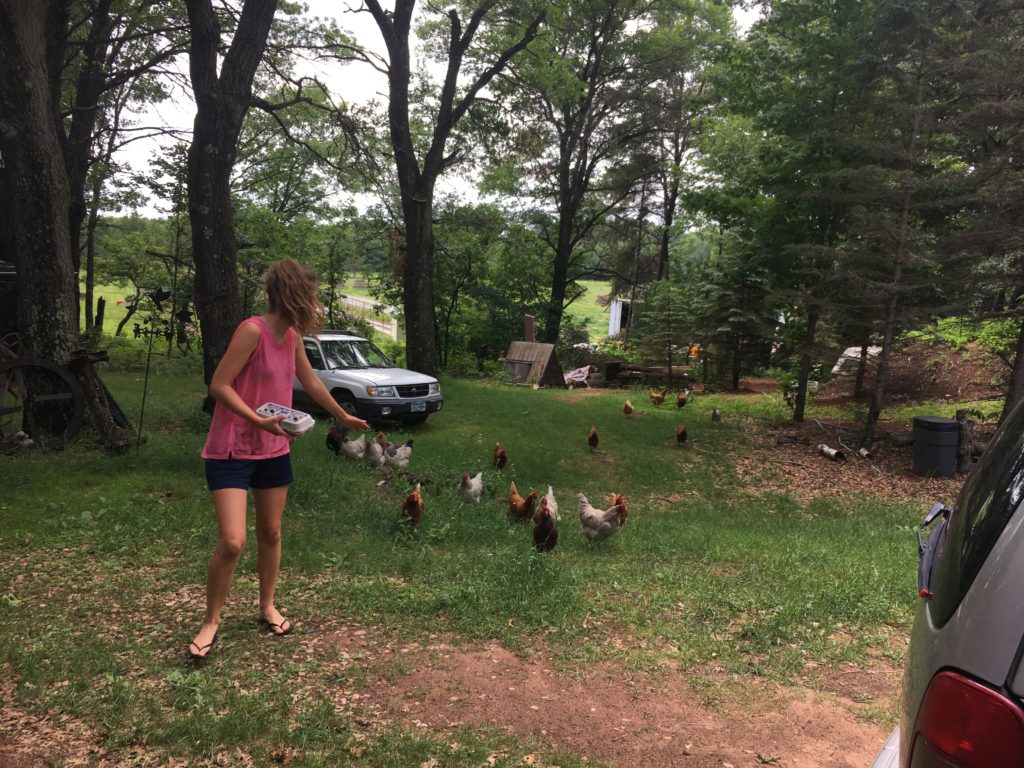
(Hens lay bigger eggs as they age. Something you don’t realize until you have chickens.)
Radishes – French Breakfast & Crimson Giant varieties – The cute, little spring radishes that precede the intimidatingly large fall radishes.
Green onions – Sometimes called spring onions or table onions. They’re mild enough to eat fresh but good cooked up too!
Garlic scapes – nomnomnom
– bundled with the green onions, the sproingy looking things are the flowers of our garlic crop.
Salad mix – another bag of delicious assorted leaves … red and green lettuce, mizuna, pea tips, arugula.
Peas – First pea harvest of the season! Most of ya got sugar snaps, but 3 boxes received equally-delicious snow peas.
Bok Choi – bagged with the ….
Broccoli – A sprouting variety known as “Broccolini,” we cut off the heads early in order to induce side sprouts of little broccolinis for the rest of the season. The main crop of broccoli is still coming …
